- Skip to main content


How to Create Your TED Talk: An 8-Step Process
by Jezra on March 9, 2017
First, A Little Background on TED
The TED conference (which stands for technology, entertainment, design ) began life in 1984 as a yearly and very expensive conference where industry leaders and creative types gathered to exchange “Ideas Worth Spreading.”
Back then, it was all about the live experience, and speakers were expected to bring some quirky spontaneity to the stage.
But fast forward more than 30 years, and TED has become an institution, spawning countless local “TEDx” events, putting hundreds of speeches online each year, getting millions upon millions of views, and changing the way we all think about public speaking!
So, What IS a TED Talk?
According to Chris Anderson, the owner and global curator of TED, every TED talk starts with an idea :
“You have something meaningful to say, and your goal is to re-create your core idea inside your audience’s minds.” —from TED Talks: The Official TED Guide to Public Speaking
Anderson calls this idea “the gift in every great talk.” Your idea may:
- Be common-sense (“Every kid needs a champion”) or counter-intuitive (“The way we think about charity is wrong”)
- Describe a scientific breakthrough (“How bacteria talk”) or your own experience (“I am the son of a terrorist, here’s how I chose peace”)
- Motivate people to action (“We need to talk about an injustice”) or greater self-awareness (“Your elusive creative genius”)
But in every case, your TED talk will begin with an idea.
Want Speechwriting or Coaching Help?
And whether or not your talk actually builds a model of your idea in your listeners’ brain — Anderson takes that literally, and research on “neural coupling” backs him up — your TED talk exists to communicate this idea to your listeners.
That is your talk’s one and only goal.
Other Qualities of Successful TED Talks
In TED’s secret to great public speaking (an eight-minute video that’s worth watching), Anderson offers three guidelines for creating your TED talk:
- Focus on one major idea
Ideas are complex things; you need to slash back your content so that you can focus on the single idea you’re most passionate about , and give yourself a chance to explain that one thing properly… Everything you say [should link] back to it in some way.
- Give people a reason to care
Stir your audience’s curiosity. Use intriguing, provocative questions to identify why something doesn’t make sense and needs explaining. If you can reveal a disconnection in someone’s worldview , they’ll feel the need to bridge that knowledge gap.
- Build your idea with familiar concepts
Build your idea, piece by piece, out of concepts that your audience already understands … A vivid explanation… delivers a satisfying ah-hah! moment as it snaps into place in our minds.
These are important best practices, but they don’t tell you what to do to create a TED talk.
For that, try this…
8-Step Process for Creating Your TED Talk
Step 1. find an idea you want to share.
To hone in on your idea worth sharing, it can be useful to ask yourself things like:
- What’s one assumption I’d like to challenge?
- What’s a belief of mine that has changed, and why?
- What does everyone miss when they think about my area of interest or expertise?
And remember, you’re looking for an idea . As Jeremey Donovan says in How to Deliver a TED Talk ,
…an idea is not a theme, a general truth, a platitude or a big goal. “Everyone wants to feel included” is not an idea, it’s a general truth. “Empowering women” is not an idea, it’s a topic.
Step 2. Develop an unexpected and/or catchy way to state your idea
If your idea can be stated in a catchy way, listeners will pay more attention and remember it more easily. Here are some examples (with more conventional versions of the same idea in parentheses):
- We can solve malnutrition now (vs. Malnutrition is a problem that is finally, in our day and age, able to be resolved by advances in science.)
- Almost dying saved my life (vs. A near death experience created the motivation for me to face and overcome problems that otherwise would have slowly killed me.)
- Never, ever give up (vs. Cultivate the ability to commit without wavering; it’s an essential component of your lifelong success.)
Step 3. Collect anything and everything that relates to your idea
To re-create your idea in the minds of your listeners, you’ll need vivid examples, illustrations, stories, facts, questions, comments, etc.
So take a few days to notice anything and everything that relates to your idea, and collect these materials by writing them down, taking photos, recording your thoughts as sound files, etc.
Examples of things you might collect include:
- a snippet of conversation
- a quote you heard in high school
- a story that relates to your idea
- a fact, or cluster of data that supports it
- a metaphor or analogy that helps explain it
- a personal moment in your relationship with the idea
- a physical object that will help your audience understand it (here, my client Erika Frenkel presents an anesthesia machine )
Basically, anything that comes to your mind at this stage should be collected.
And don’t worry yet about which materials will end up in your talk.
You can’t collect things and evaluate them at the same time, so just collect for now; you’ll have a chance to evaluate later.
Step 4. Start imagining how you might open and end your talk
While it’s too soon to choose your opening and close, it’s not too soon to start playing with ideas for these important parts of your talk.
An effective way to begin any speech (not just a TED talk) is to grab your audience’s attention — often with a human interest story, a surprising statistic, an unexpected observation, or a thought-provoking question.
There are probably some great attention-grabbers in the material you collected for Step 3. Pick one that you particularly like, and flag it as a possible opening for your talk.
As for the close , you’ll probably want to end your talk in a positive, forward-looking way . This is often done by:
- calling the audience to action;
- painting a hopeful picture of the future; and/or
- “paying off” (finishing, resolving) a story or discussion that has run through your talk, so that listeners get a sense of closure.
With your provisional opening and close in mind, you’re now ready to…
Step 5. Put the rest of your materials in a reasonable order
The middle of any speech is tricky, and a TED talk is particularly so, because TED talks can take just about any form you’d like.
So to tackle this part of your TED talk, take the materials you’ve collected and shuffle them until you find a good arrangement. To do this, you can:
- Create a high-level outline (leave out most of the detail, just arrange the big points or elements)
- Write each element (story, comment, observation, fact) on a 3 x 5 card and physically shuffle them to see different possible orders. (You can do this on a table, or digitally, by creating one slide per element and shuffling them with PowerPoint’s “slide sorter” feature)
- Use sound (speaking out loud) instead of writing to put your talk elements into different sequences (Ask: Does it sound right if I tell that story first, then give the fact? How about if I give the fact first, then tell the story?)
- Try any other method that works for you.
How will you know when the order is good?
Keep in mind that your goal is to create an understanding of your idea in the minds of your audience members , and try to arrange your explanations, comments, and stories in a way that leads to that goal. (You’ll get to test this on real people in Step 7.)
Trust your instincts: If something seems out of place to you, it probably is. Try moving it to a different part of your talk or even skipping it, and see if that works better.
And don’t expect to find the best organization for your talk the first time you try, because that almost never happens!
Step 6. Talk your way to a rough draft of your script
This is where your “speaking plan” becomes a “speech.”
Take your outline or list of ordered elements and talk about each item in turn.
When I’m writing a speech, I like to literally talk it out loud and type up what I’m saying as I’m saying it — but you can also use your computer’s voice recognition software to capture your words, or talk into the voice memo feature on your phone (this used to be called “dictating”) and type up the sound file later.
Why record yourself talking instead of just writing out the speech?
Because most of us get all formal and stiff when we write, and the ideal for a talk is that it sounds like you’re… talking !
And here’s a hint:
As you do this step, pay particular attention to the way different elements (materials) that you’ve used in your talk are connected.
If, for example, you tell me that:
- The river flooded, and
- Some people moved out of the neighborhood…
I’ll want to know: Did people move because the river flooded? Did most people stay even though the river flooded? Did the river flood after people had already moved?
When you spell things out clearly, people will form a clear picture of your point.
Step 7. Try out your Ted talk draft on a volunteer listener
The point of this step is to get feedback on how to improve the structure and clarity of your draft.
Ask someone you trust — a smart 10-year-old is perfect — to listen to your talk.
Read it to them (because you haven’t finalized, let alone memorized, it yet), and then ask them:
- Did I explain my idea clearly?
- Was there anything in my talk that you didn’t follow?
- Was there anything you didn’t understand?
- Did anything seem out of place?
- Did I lose your interest anywhere?
If your listener wants to discuss the 6,000 facts you left out, or how your talk should really be about X instead of Y, gently lead them back to these questions.
The point is not to change your talk. The point is to improve it’s effectiveness.
Step 8. Repeat the following steps as needed
- Based on your listener’s feedback, make changes that will improve your draft. But don’t get carried away editing; if it ain’t broke, don’t fix it! (And keep your old drafts in case you want to go back to something you did earlier; I number mine v1, v2, v3, etc.)
2. Practice delivering your new draft out loud.
3. Try out your new draft on a volunteer listener, get their feedback , and repeat these steps as often as needed until your talk has taken a satisfying shape.
And finally…
There’s no better time to start working on your talk than now. Even if your schedule is crammed, you’re better off working for a few minutes each day than leaving everything to the last minute!
And as you work this process, remember that perfection isn’t possible.
So instead of striving for perfection, prepare carefully, take your best shot, and try to relax .
Your audience is going to love this talk — and you deserve to enjoy it, too!
Need Coaching or Speechwriting for Your TED Talk? Get in Touch!
- How can I help you? *
- How did you find me?
You May Also Want to Read...
- Giving a TED-Style Talk? Here's How They're Different from Business Presentations
- TED Has Eliminated Two Things That Used to Be Said In Most Speeches: Hello and Thank You. Should You?
- Masterful Public Speaking: Daniel Kraft's TEDx Talk
.css-1qrtm5m{display:block;margin-bottom:8px;text-transform:uppercase;font-size:14px;line-height:1.5714285714285714;-webkit-letter-spacing:-0.35px;-moz-letter-spacing:-0.35px;-ms-letter-spacing:-0.35px;letter-spacing:-0.35px;font-weight:300;color:#606F7B;}@media (min-width:600px){.css-1qrtm5m{font-size:16px;line-height:1.625;-webkit-letter-spacing:-0.5px;-moz-letter-spacing:-0.5px;-ms-letter-spacing:-0.5px;letter-spacing:-0.5px;}} Resources TED speakers' secrets to great public speaking
by TED Masterclass Team • May 14, 2020

Do you have a big presentation coming up for work? Are you just looking to learn a new skill? You don’t have to be a naturally charismatic orator to tell compelling stories, but a few tips can go a long way to help you share your ideas in the most engaging way possible. These TED Talks will help you get prepared and start mastering the art of communicating effectively:
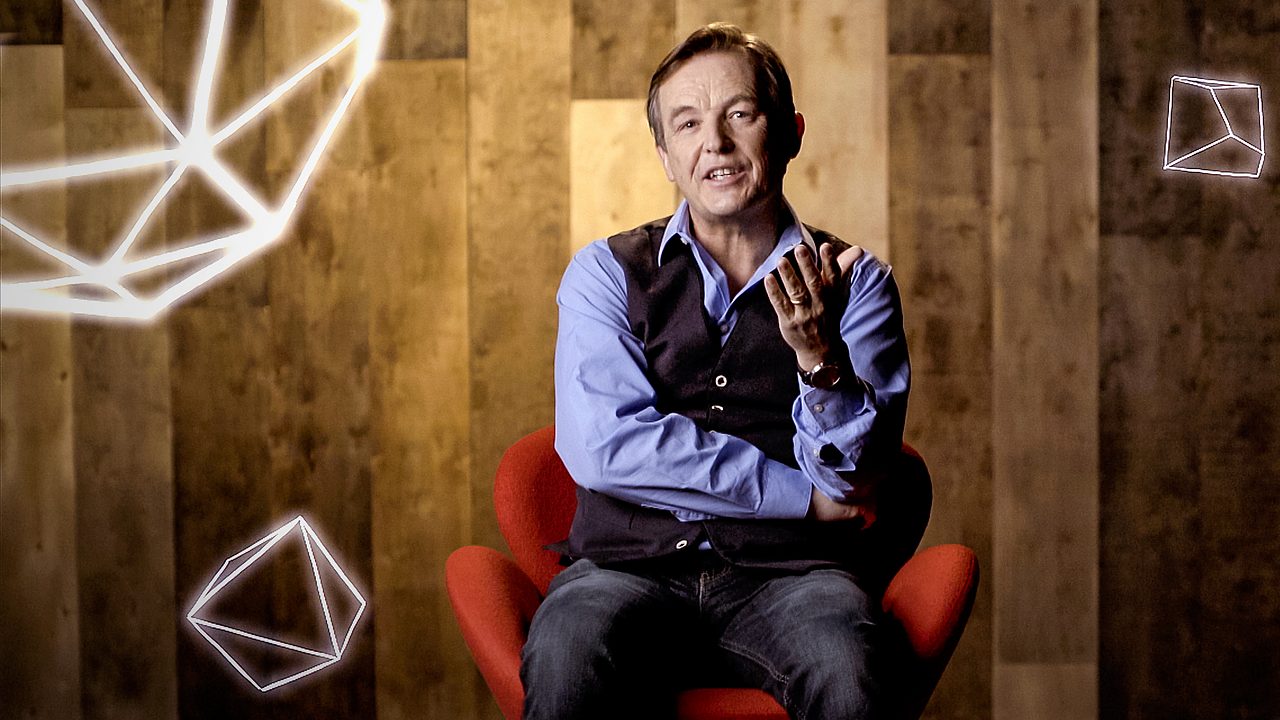
.css-ikhk7x{display:block;margin-bottom:4px;font-size:14px;line-height:1.5714285714285714;-webkit-letter-spacing:-0.35px;-moz-letter-spacing:-0.35px;-ms-letter-spacing:-0.35px;letter-spacing:-0.35px;font-weight:300;color:#1D1D1D;}@media (min-width:600px){.css-ikhk7x{font-weight:600;font-size:20px;line-height:1.5;-webkit-letter-spacing:-0.2px;-moz-letter-spacing:-0.2px;-ms-letter-spacing:-0.2px;letter-spacing:-0.2px;font-weight:400;}} Chris Anderson TED’s secret to great public speaking
Why you should watch it.
What if there was a TED Talk on how to give a TED Talk? Well, there is. In this Talk, TED’s head curator helps you understand the secret ingredients to a TED Talk and how you can use those ingredients when developing your own talk or presentation.
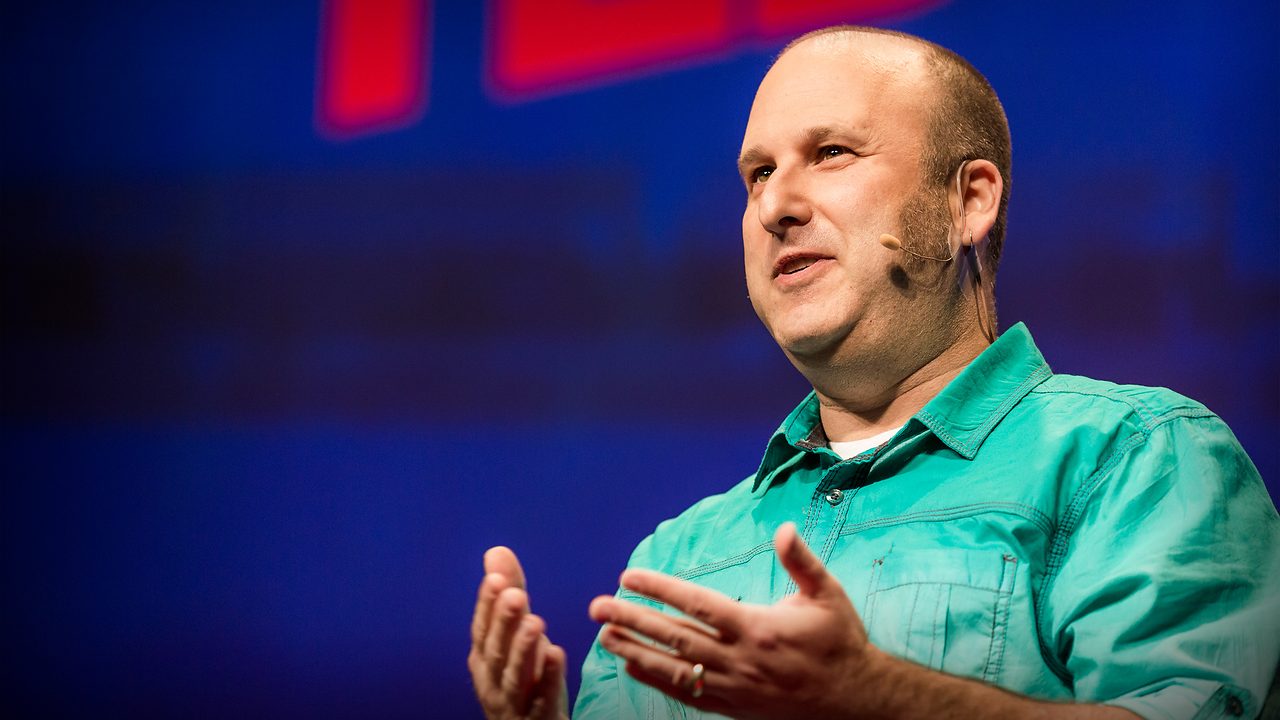
Joe Kowan How I beat stage fright
If just the thought of standing in front of people makes your hands feel clammy and your mouth dry, this Talk is for you. In this funny Talk, singer-songwriter Joe Kowan shares his personal story of how he deals with stage fright and is able to sing in front of people every night.
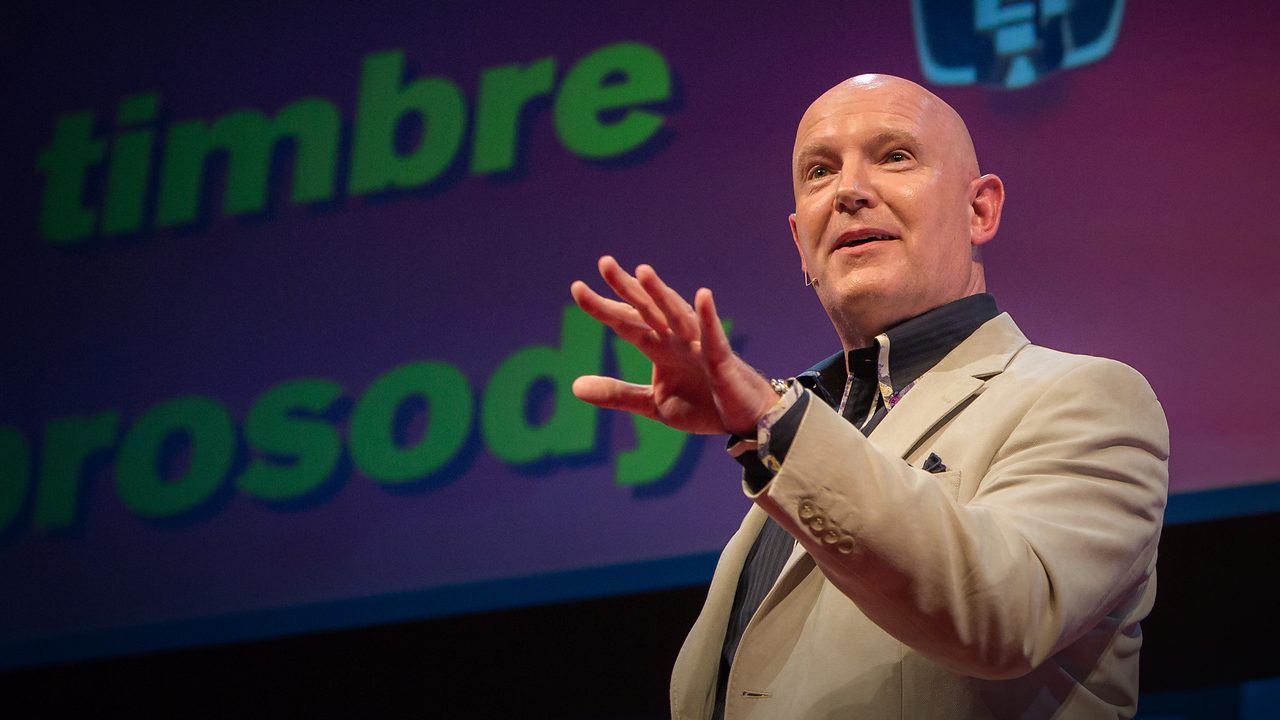
Julian Treasure How to speak so that people want to listen
You’ve got something important to say, but how do you make sure people are actually listening? In this Talk, Julian Treasure, an expert on sounds, demonstrates how you can achieve powerful speaking by using vocal exercises and tips.
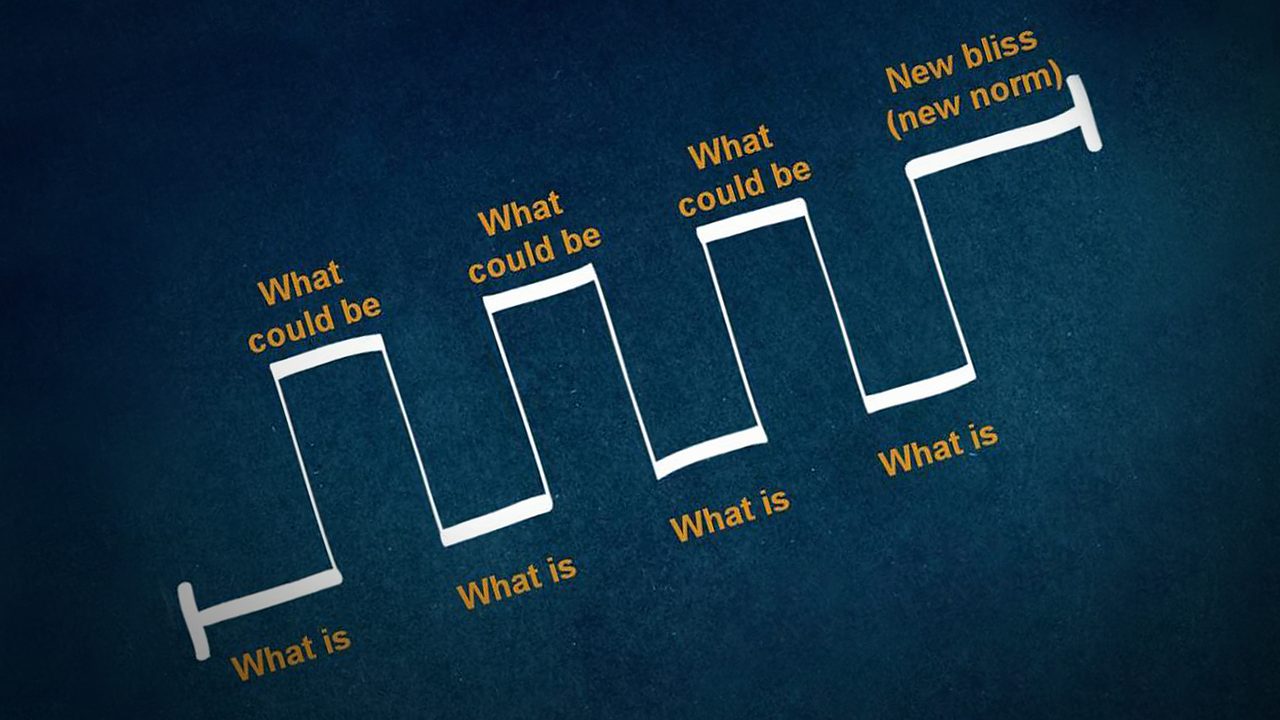
Nancy Duarte The secret structure of a great talk
What do Martin Luther King’s “I have a dream” speech and Steve Jobs’ iPhone launch keynote have in common? According to this Talk: The structure of their speech. Watch now to learn how you, too, can use this simple structure in your next presentation or speech.
You’ve seen tips on structure, sound, stage fright, and what the secret sauce of a TED Talk is. Are you ready to use your newfound knowledge and get started on telling your story?
Check out the TED Masterclass course and learn how to communicate effectively and efficiently (even if it’s just a video call).
© 2024 TED Conferences, LLC. All rights reserved. Please note that the TED Talks Usage policy does not apply to this content and is not subject to our creative commons license.

- VisualStory®
- Duarte DataStory®
- Presentation Principles™
- Slide:ology®
- Slide Design
- Speaker Coaching
- Presenting Virtually™
- Illuminate™
- Adaptive Listening™
- Team training
- Learning journeys
- Brand and product storytelling
- Keynotes and events
- Sales enablement
- Communication systems
- Accelerator Lab™
- Our culture
- Our leaders
- Case studies
- Media mentions
- Guides and tools
- Learner support
10 ways to prepare for a TED style talk

Nancy Duarte
I’ve given all types of talks. And while all presentations take an investment to make them effective, the creation of a high-stakes, beautifully staged TED-style talk often proves to be especially difficult. It takes work to craft the talk, and then even more to make the delivery sound natural.
What makes preparing for a TED Talk so tough?
A TED Talk is 18 minutes long—a length that was chosen by TED organizers based both on neuroscience and strategy . They understood that 18 minutes was long enough for a speaker to flesh out an idea, but short enough that a listener could take in, digest, and understand all of the important information.
TED curator Chris Anderson explains :
“The 18-minute length works much like the way Twitter forces people to be disciplined in what they write. By forcing speakers who are used to going on for 45 minutes to bring it down to 18, you get them to really think about what they want to say. What is the key point they want to communicate? It has a clarifying effect. It brings discipline.”
In reality, creating a talk that is ONLY 18 minutes, instead of 45, is tougher than you might imagine. Woodrow Wilson summed up the process of giving a short, but effective speech best when he said:
“If I am to speak ten minutes, I need a week for preparation; if fifteen minutes, three days; if half an hour, two days; if an hour, I am ready now.”
Not only is the 18-minute speech editing process challenging, but the rehearsal process takes a lot of time. In fact, I discovered that the amount of rehearsal time required is inversely proportionate to the length of the talk. True story: for the last 18-minute TEDx Talk I gave, it took me approximately 18 hours to rehearse.
Preparation tips: How to give a TED Talk that gets a lot of views
Here are ten preparation tips for how to give a TED Talk that fits within tight time limits and results in a presentation that’s as effective as possible.
1. Print your current slide deck as 9-up handouts.
The 9-up format is conveniently the same size as the smallest sticky note. When I prepared for my TEDx Talk , I arranged and re-arranged my message onto sticky notes—adding sticky notes until I was happy with the flow. If I’m whittling down my talk from, say, a 40 minute talk, I make sure I cut at least half of my slides. Keep trimming and trimming until you feel you are close to 18 minutes. During this process it becomes clear that your big idea can be communicated in a succinct, distilled manner.
2. Solicit feedback.
Assemble a handful of people who are effective presenters that you trust to give honest, unfiltered feedback on your narrative and slides. Verbally run the ideas by these folks (it doesn’t have to be a formal presentation). Have them look at all the slides at once so they give feedback on the “whole,” not the parts. Have them give you feedback on the content you’ve chosen and ask whether they think it will resonate with your audience. Consider doing this a handful of times: when I did my TEDx Talk, I repeated this step four times, twice with my ExComm Manager and twice with my company President. After they added their insights, I was ready to have the slides designed.
3. Rehearse with a great (honest) communicator.
Choose someone you trust and also that understands how to give a TED Talk, and rehearse with them. In my case, I rehearsed with a Duarte speaker coach . She would say honest things like: “When you say it that way, it can be interpreted differently than you intended,” “When you use that term, you come across derogatory,” “I thought that when you said it last time it was better, you said…” She worked hard tracking phrases and rounds of what was said. When it comes to preparing for a TED Talk, honesty is the best policy. Make sure your coach is not afraid to speak up; 18 minutes goes by fast. You love your material and you want to include all of it, but if you want to master how to give a TED Talk successfully, you need someone you trust to help you murder your darlings.
4. Close the loop.
A lot of times, as the presenter, you know your material so well that you think you’re making each key point clear. You might not be. Your coach should make sure you are telling people why. It’s the “why” around our ideas that make them spread, not the “how.” Articulate the why so your audience understands what’s magnificent about your big idea.

5. Practice with clock counting up.
The first few times, rehearse with the clock counting up. That’s because if you go over, you need to know how much you’re over. Do NOT be looking at the clock at this time. Have your coach look at it because you don’t want to remember any of the timestamps in your mind. Finish your entire talk and then have your coach tell you how much you need to trim. Keep practicing until you’re consistently within 18 minutes. Your coach should be able to tell you to trim 30 seconds here or add 15 seconds there so that your content is weighted toward the most important information.
6. Practice with clock counting down.
Once you’re within the timeframe, begin practicing with the clock counting down. You need to set a few places in your talk where you benchmark a time stamp. Calculate where you need to be in the content in six-minute increments. You should know roughly where you should be at 6, 12 and 18 minutes. You should know which slide you should be on and what you’re saying so that you will know immediately from the stage if you’re on time or running over.
7. Be noteworthy.
Your coach is there to jot down what you say well and what you don’t. They should work from a printout of the slides and write phrases you deliver effectively so they can be added to your script. They should help you capture phrases so you can type them into your notes.
8. Don’t be camera shy.
Videotape some of your final practices. It doesn’t have to be a high-end video setup—I’ve used my iPhone camera on a tripod in a hotel room. You just need to feel like something’s at stake. Videotaping yourself helps you get used to looking at the camera, and you can review the video to look at your stage presence, eye contact, gestures, plus identify any expressions that need modification. Also, if you do an especially good practice run, you can go back and listen to the audio and add the best snippets to your slide notes. The TED audience has only about 1,000 people in it, but the TED.com audience has millions. So, talk to the camera like there are humans on the other side of it.
9. Do one more FULL timed rehearsal right before you walk on stage.
Right before you go onstage (we’re talking day-of), do one more timed rehearsal. This will ensure that you know the speech and that you’re well aware of where you might need to slow down or speed up.
10. Have two natural ending points.
I gave a TED-style talk in India with a head cold. I knew I’d possibly lose track of timing. Give your talk two natural ending points. Pick two natural places you could stop in your talk, then demarcate those as possible endings. That way, if you’re running way over, you can stop at your first ending point, and while your audience may miss out on some inspirational or emotional ending, they’ll have heard all of the most important information that matters.

Check out these related resources

How to “Talk Like TED” and other insights from Carmine Gallo

Graphic recording at #illustraTED | Progress enigma

#illustraTED | Duarte is visualizing TED talks all week

Lights, Camera, Inaction: The Onion’s Take on TED

10 Ways to Prepare for a TED-format Talk
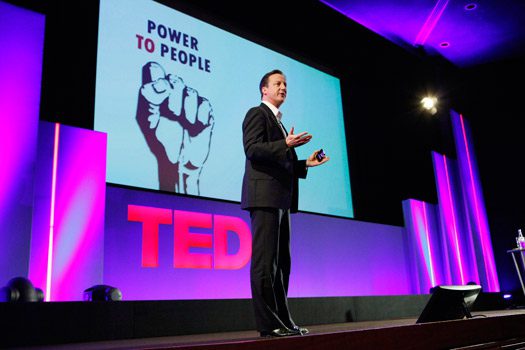
Impressions of TED2010 so far…

How to Prepare A TED Talk: The Complete Guide for Stage Success
At Thought-Leader, we’ve worked with hundreds of professionals across the globe. While they’ve all placed significant effort into building their businesses, they often find themselves confused and frustrated when hoping to land a spot on the TEDx stage. That’s because writing, memorizing, and delivering a stellar TED experience is different than any other speech or presentation you’ve ever given. Speech writing training is an essential part of this process.
How to Write A TED Talk
One of the common frustrations we hear from aspiring TED speakers is writing their talk. So often, these individuals feel overwhelmed by multiple thoughts and overshadowed by existing ideas. If left unchecked, these feelings of overwhelm can lead to self-doubt and keep you from hitting your TED talk goals.
TED talk preparation is less about creating the next biggest thing and more about overcoming the self-doubt that keeps you from reaching your goals. Therefore, one of the first steps you can take to write a TED talk is not to give up. You can also partner with TED-style speaker coaches to hold yourself accountable and reach your writing goals.
How To Write A TED Talk Script
Writing a TED talk script is often the dread of many aspiring speakers. After all, if writing doesn’t come naturally to you, a script might be the most significant hurdle you face in your speaking career. Yet, while many of our clients initially express this same fear to us, they often leave our talk-writing intensives satisfied with a written script in hand.
So, how do they do it? They follow a 3-step process we’ve created to help speakers reach their TEDx goals. Here’s a brief overview of what that process looks like:
Identify Your Idea
Decide on the main point you’re trying to make by giving your talk.
Select Your Stories
Select your stories that support or illustrate your main point and establish an emotional connection with the audience.
Create A Call-To-Action
Leave the audience with something they can do to take action in their lives immediately.
How to Write A Ted Talk Speech
Once you have your script written, it’s time to focus on your speech. Now you might be asking yourself what’s the difference between a ted talk script and a ted talk speech. The main difference is that a script is written to be read by others, whereas a speech is written to be spoken to an audience.
For example, you write your TED talk script for the event organizer you submit it to. They need a scripted version of your talk to know the details you will speak on. There aren’t emotional cues or other personalized messages involved. Meanwhile, your TED talk speech is for you more than anything. It serves as a guide so you can speak to the audience.
When writing a TED talk speech, you might include places to pause for audience feedback or hand gestures to use. Consider the role breathing plays in giving a speech and make sure to write in pauses for breath. You can also add memorization notes to help you when practicing your speech.
Preparing A TED Presentation
When you’re prepping to talk at TED or a TEDx event, you must consider the various presentation elements involved in giving a stellar performance. Things like body language, slides, and other visual aids can make or break your connection with your audience. So, let’s dive into how you can utilize these elements to affect the inner workings of your presentation.
Ted Talk Body Language
Have you ever watched low-scoring films where the actor’s movements didn’t seem to align with their statements? Perhaps a baseball coach was too stiff while giving a pep talk, or a kid couldn’t convey fear, which made the entire scene awkward.
Now think about your favorite tv show or movie. Consider how the actors aligned with their character’s message. One that comes to mind is the #2 Worldwide Box Office hit Avengers End Game. Actor Robert Downy Jr. knew his role as Iron Man was important to the film’s integrity. His heavy breathing, stoic expression, and pause in between the words, “And I…….am …Iron Man,” set the scene for the film’s ending. Knowing his character was going to die using up its energy to defeat villain Thanos, Downy’s use of body language and vocal expression makes the entire ending battle of the film.
As you’re prepping for your talk, it’s essential to think about body language’s role in delivering a speech. Take time to pause in between critical points so your audience has time to resonate with your message. You can also change your voice’s pitch as you transition between emotional sections of your speech. To learn even more about the role body language plays in who you are, consider checking out this TED talk by Amy Cuddy.
TED Talk Slides
Some of the most popular TED speakers use Powerpoint slides to deliver their messages. While the number of slides isn’t an indicator of success, the usage of slides in general is. Here are a few of the most viral TED talks that use slides along with their total number of views:
The Super Mario Effect – Tricking Your Brain into Learning More – 11,482,130 views Intermediate Fasting: A Transformational Technique – 10,079,396 views Waking Up As A Meme Hero – 7,392,226 views
Source: 15 Things We Learned From Analyzing The Top 100 TEDx Talks
When you’re thinking about adding slides or graphics to your TED Talk, consider how they will enhance the critical points of your presentation. For example, our client and popular TEDx speaker Cynthia Thurlow uses a few slides to showcase her data. This data adds to the credibility of her speech and makes her message stand out that much more.
Virtual TED Talks
Virtual TED or TEDx talks have risen in popularity since the 2020 pandemic, and we don’t think they’re going anywhere anytime soon. If you’re chosen to give a virtual TED Talk, it’s your lucky day. Unlike the pressure associated with giving a TED talk or TEDx presentation in front of a live audience, a virtual TED talk is pre-filmed in front of a green screen.
When preparing for a virtual talk, it’s vital to get an idea of the type of green screen you’ll be standing in front of ahead of time. In addition, knowing the theme of the screen background helps you coordinate your outfit so you don’t clash or blend in with your surroundings.
Since you’ll be on video, it also might be helpful for you to hire a videographer to film you ahead of time so you can practice in front of a camera ahead of time. You can review your recordings for areas of improvement and find ways to add more body language or facial expressions while remaining focused on the camera.

TED Talk: How to Practice
Once your talk is written, and your presentation is ready to go, it’s time to practice your talk until you’re blue in the face. Okay, we don’t recommend you turn blue. Layering breathing in your speech is an integral part of practicing your talk. But, we do want you to practice effectively. So here are some tips we’ve outlined that can help you do just that.
1. Use Muscle Memory
Often individuals look at memorization and practice as the repetition of words. If this is you, you might get hyperfocused on memorizing a line word for word. As a result, you don’t often move around or incorporate your body into memorization.
When preparing for a TED talk, you want to work towards muscle memorization. As opposed to mental memorization, muscle memorization involves using your body language to help you memorize. For example, combine speaking words out loud while moving around. This repetition of an action helps you remember where you were when you memorized a sentence. So, when it comes time to give your speech, you can picture yourself in the place and movement you had when you memorized a particular section.
- Do you mainly blog?
- Write nonfiction?
- Write fiction?
- How public do you plan to be as an author?
2. Focus On A Central Thought
Another important way to practice giving a TED talk is to zoom out the words you’re memorizing and focus on a central thought. It’s not a sequence of words that allows you to memorize something, but rather the flow of thoughts that make things click. Therefore, you need to define a section of your speech based on the topic or central thought and focus on that concept when saying words.
When you memorize ten clear thoughts with a pattern, you can pull out the words based on their connection to the central idea. This working of our brains becomes easier and more retainable than word for word focus.
3. Condition Your Body Using Playful Expression
When preparing for a speech, it’s easy to focus exclusively in your headspace, with little regard for your heart space. However, when you wrote your TED script, you didn’t write it to be read. Instead, you wrote it to be heard. Therefore, To deliver your talk successfully, you need to activate a relationship between body, breath, and voice.
If you’re a champion sprinter, you’re not going to get on the track until you’ve warmed up your legs and body. Similarly, a TED talk is 15 to18 minutes long, which takes stamina. Therefore, you have to condition your body so that your body is prepped to rise to the occasion when you deliver the talk.
To condition, your body for a TED talk presentation, get out of the habit of rigid movements. Instead, practice your talk with uncontrolled, dynamic movements and vocals. This playful physical expression gets the body active and works in unison. When you practice outside of your comfort zone, you can easily talk in front of an audience.

Focus On One Major Idea:
Note: For more information on effective practicing, consider watching this TED-Ed video by Annie Bosler and Don Greene.
Planning A TED Talk
Your planning process can begin now that you know what it takes to prepare for a TED talk. Consider the various suggestions we’ve listed above before preparing for your talk and let them guide you in your presentation creation process. Our TED coaching services can guide you in the right direction.
Think about the role self-doubt may have in keeping you from your goals, and give it a kick in the butt. Remind yourself of why you want to get on the TED stage and use that passion to drive your writing process forward. Anticipate what event organizers want in a script vs. what you need to deliver in a speech.
Check out more great articles from the Thought-Leader Blog covering TEDx Talks, success mindsets, and everything else in between
How to Get a TED Talk
How to prepare a ted talk, how to market yourself effectively, how to become a keynote speaker, how to speak professionally.
A simple trick to help you speak in public without showing your nerves
Share this idea.
- Click to share on Facebook (Opens in new window)
- Click to share on Twitter (Opens in new window)
- Click to share on LinkedIn (Opens in new window)
- Click to share on Reddit (Opens in new window)
- Click to share on Pocket (Opens in new window)
- Click to share on WhatsApp (Opens in new window)

You don’t have to put up with a thin, shaky voice, says speech-language pathologist Jackie Gartner-Schmidt.
Every weekday for the month of January, TED Ideas is publishing a new post in a series called “How to Be a Better Human,” containing a helpful piece of advice from a speaker in the TED community. To see all the posts, click here .
Ever given a presentation and felt like your throat was closing up or that there was a big lump in it? Or made an important request of your boss but thought your voice sounded as shaky as Jello on a trampoline?
Turns out, you don’t suffer from some unexplained physical malady. There’s an anatomical explanation for what happens to our voices when we’re under pressure, says speech-language pathologist and University of Pittsburgh professor Jackie Gartner-Schmidt .
All humans have vocal cords — also called vocal folds since they’re folds of tissue — which sit on top of our windpipes, right behind the Adam’s apple. “The real reason we have vocal folds is to protect ourselves,” says Gartner-Schmidt. In fact, they do the very important work of preventing us from inhaling water into our lungs whenever we drink something.
But researchers have found “in experimentally induced stressful situations — be it public speaking, hearing a loud startle sound or having cold water put on your body — that the muscles around the voice box and the muscles actually inside the voice box [a.k.a. the vocal folds] react,” says Gartner-Schmidt. “They activate, and in some cases, they close altogether.”
Of course, no one wants to sound shaky, squeaky or choked up when they speak. As Gartner-Schmidt puts it, “We want our voice to reflect our strengths, not our weaknesses.” She says, “in study after study a high-pitched voice has been correlated with the perception of anxiety, not being competent, not being strong, and not being trustworthy.”
And this matters more and more now, as many of our meetings and interviews take place over conference calls or low-res video chats. As a result, says Gartner-Schmidt, “the voice is substantially taking over more and more of how we are perceived.”
To avoid this, she suggests doing this easy exercise (which she calls one of her favorites).
Hold up your index finger a few inches in front of your mouth. As you exhale steadily, make a “Wooooooo” noise (think: little kid pretending to be a ghost) for 5 to 10 seconds. Do this 5 to 10 times. (Watch her demonstrate it here .)
“This … essentially relaxes the vocal folds,” says Gartner-Schmidt. “It establishes breath and air flow and voice stability, which is the cornerstone of any strong, clear voice.”
Right before the next important occasion in which you have to speak — for work, for the toast you’re giving at a wedding, for a speech to a community board — take Gartner-Schmidt’s advice and “spend some time finding your best voice.”
Watch her TEDxPittsburgh talk here:
About the author
Mary Halton is a science journalist based in the Pacific Northwest. You can find her on Twitter at @maryhalton
- business advice
- how to be a better human
- jackie gartner-schmidt
- public speaking
TED Talk of the Day

How to make radical climate action the new normal

3 strategies for effective leadership, from a former astronaut

Feeling unseen by your boss? Here’s what you can do


Let’s stop calling them “soft skills” -- and call them “real skills” instead

There’s a know-it-all at every job — here’s how to deal

The 7 types of people you need in your life to be resilient

Perfectionism holding you back? 3 ways to shift the habit

The unseen forces that can cause your great new idea to crash and burn

Have you quietly quit? Your next step: Go to the neutral zone

6 ways to give that aren't about money

A smart way to handle anxiety -- courtesy of soccer great Lionel Messi

One effective way to manage stage fright: Make it a habit

Before your next presentation or speech, here's the first thing you must think about

4 easy ways to upgrade your workday

Want to speak from the heart? Answer this question first
5 Secrets of a Successful TED Talk
Subscribe to our weekly newsletter.
What makes a successful TED Talk ?
Here at the Science of People we endeavored to find out. Why do some TED Talks rack up millions of views, change lives and are talked about everywhere?
All TED Talks are good. Why are some great?
We set out to answer this question with one of our first crowd-sourced Citizen Science projects. Over the last year, we had 760 volunteers rate hundreds of hours of TED Talks looking for patterns.
We were amazed at what we found. Before I get into the 5 patterns, I want to give you some juicy background:
What’s New?
A few authors have aspired to take on the puzzle of what makes a successful TED Talk. Here’s what’s different:
- More than One Opinion: We crowd-sourced the data. Instead of one researcher coding and looking for patterns, we had hundreds of participants rating and analyzing the Talks.
- Beyond Words: Although there are some amazing books about the verbal patterns, strategies and rhetoric in TED Talks, very few focus on the body language patterns . And we quickly found out that the nonverbal is even more important than the verbal (see #1 below).
- Previous Research : We based our experiment on peer-reviewed academic research on nonverbal patterns. In this way, we know our results have a solid foundation in respected scientific trials (see citation list below).
- Controls: To get the most accurate results, we only used videos that had been posted on TED.com (so they had similar exposure), were posted in 2010 (so they had about the same amount of time to garner views) and were between 15 and 20 minutes long (so extra short or long Talks didn’t skew the participants’ ratings). We also worked with the amazing Data Scientist, Brandon Vaughn, to make sure our results were solid (see his bio below).
TED is a non-profit that posts videos of the people with the best ideas presenting on a variety of fascinating topics. This gave us the perfect database of videos of charismatic and intelligent people . Most importantly, the number of views on each video gave us a clear idea of popularity. For example, here are two amazing Talks on leadership: one by Fields Wicker-Miurin called “Learning from Leadership’s Missing Manual” and one by Simon Sinek called “How Great Leaders Inspire Action”. Note the difference in views:
While Wicker-Muirin gets a respectable 609,366 views, Sinek’s Talk gets a mind-boggling 20,929,959 views! And:
- Both Talks were published the same month (September 2009) which means they had the same amount of time to garner views.
- They are both on similar topics.
- These are both respected, but NOT famous speakers.
Something about Sinek’s Talk caught fire, captured people and went viral. We see this pattern over and over again on TED. Some Talks hit big and some don’t. But, why?

Tweet me your favorite TED Talk!
The Bigger Picture:
While we examined TED Talks in this experiment, the implications are wide reaching. We are talking about how to increase your charisma, presence and the personal power from a stage, in board rooms and when interacting with people .
We believe these 5 patterns show us how to be an influencer.
The 5 Patterns of Popular TED Talks:
These results surprised us. The most pleasant surprise was that these tips are extremely easy to implement for everyone in daily life. Here’s what we found and how you can use the tips:
#1 It’s Not What You Say, It’s How You Say It
TED Talkers spend so much time and energy on what to say–the words, the script, the bullets. But is how they say it more important? We found that there was no difference in ratings between people who watched Talks on mute and people who watched Talks with sound. Yes, you read that correctly:
People liked the speakers just as much with sound as on mute.
This means we rate someone’s charisma, credibility and intelligence based on nonverbal signals. This is surprising–we want people to focus on our words, but this experiment is no different from previous research. Over and over again we find that how we say something is more important than what we say. The question then becomes, how do we say something well? Read on to find out which nonverbal signals were most important…
- Bottom Line: Focus on your nonverbal just as much as your verbal.
#2 Jazz Hands Rock
Once we realized the importance of the TED speaker’s body language, we decided to look for specific nonverbal patterns that the top TED Talks had different from the bottom TED Talks. One thing became quickly clear:
The more hand gestures , the more successful the Talk. There was a direct correlation between the number of views on a TED Talk and the number of hand gestures.
The bottom TED Talks had an average of 124,000 views and used an average of 272 hand gestures during the 18 minute Talk. The top TED Talks had an average of 7,360,000 views and used an average of 465 hand gestures—that’s almost double! By the way, Temple Grandin, Simon Sinek and Jane McGonigal topped the hand gesture charts with over 600 hand gestures in just 18 minutes.
Why do we think this is? Our hands are a nonverbal way to show and build trust –studies have found that when we see someone’s hands, we have an easier time trusting them. Also, when someone uses their hands to explain a concept, we have an easier time understanding them. Speakers who use hand gestures are speaking to their audience on 2 levels–verbally and nonverbally.
- Bottom Line: To be a good speaker, let your hands do the talking.
#3 Scripts Kill Your Charisma
Nonverbal communication isn’t just about body language, it’s also about vocal cues. We had our evaluators rate the TED speakers on vocal variety, or the amount of fluctuation in their voice tone, volume and pitch . Again, the relationship was clear. The more vocal variety a speaker had, the more views they had. Specifically, vocal variety increased the speakers’ charisma and credibility ratings. In other words, speakers who told stories, ad libbed and even yelled at the audience like Jamie Oliver in his TED Talk, captivated the audience’s imagination and attention.
Researchers who have studied teacher ratings have also found that vocal variety is important for improving student evaluations (See Rocca, K.A.). When you are practicing giving your elevator pitch or your next presentation , try saying your words at least 5 different ways. Practice putting emphasis on different words, slowing and speeding up your pace and varying your volume on important points.
- Bottom Line: Memorized lines and scripts kill your memorability.
#4 Smiling Makes You Look Smarter
This finding is the only pattern that goes against the current research. Studies on smiling have found that leaders typically smile less. Nonverbal scientists believe that smiling is actually a low power behavior. However, in our research we found that the longer a TED speaker smiled, the higher their perceived intelligence ratings were. Those who smiled at least 14 seconds were rated as higher in intelligence than those who smiled for less. Doesn’t this seem counter-intuitive? When we think of an intelligent person, we usually think of someone very serious. But even when TED Talkers were speaking about a serious topic, like Sheryl Sandberg’s Talk on women leaders, smiling still helped her intelligence ratings.
- Bottom Line: No matter how serious your topic, find something to smile about.
#5 You Have 7 Seconds
We can’t emphasize enough the power of the first 7 seconds of any interaction you have. According to our ratings, people had already made their first impression and decision about the entire Talk in the first 7 seconds of the video. Researcher, Nalini Ambady calls this ‘thin-slicing.’ She says that for efficiency purposes, the brain makes very quick judgments of people within the first few seconds of meeting them. Typically, this happens before any words are exchanged. So yes, think about your opening line, but also think about how you take the stage, how you acknowledge the audience and how you deliver your first line.
I hope this research has shed some light on what makes someone charismatic and how you can improve your own stage presence . Whether you are going to deliver the next top TED Talk or you just want to make an impact in your daily life, take these 5 easy cues and make them your own.
More About the Experiment:
Participants were asked to rate TED Talks on a scale of 1 to 5 (1 being low, 5 being high). They were asked to rate the speaker’s charisma, credibility and intelligence. We did this in 3 parts:
Part I: First Impressions
Previous research by Nalini Ambady suggested that we decide if we like someone in less than 7 seconds. We wanted to know if there was a difference for people who watched an entire 18 minute Talk versus people who watched just the first 7 seconds. Here is an example of the 7 second trial where participants watched a video like this and filled out a rating chart for charisma, credibility and intelligence as they watched:
Part II: Verbal or Nonverbal
Once we saw these surprising results’ role in (see #1 above) we wondered if the verbal content or nonverbal presentation of the content had anything to do with the success of the TED Talk. This time we had one group watch and rate the first 7 seconds of a TED Talk and a second group watch and rate the first 7 seconds of a TED Talk on MUTE! It was like this:
Here’s what fascinated us at this point: All of the ratings matched the number of views. In other words, the Talks that got the most views were also the Talks that got highest ratings in credibility, charisma and intelligence whether or not people only watched 7 seconds or on mute. As we explain in our 5 patterns:
Our research suggests that we decide if we like the TED Talk in the first 7 seconds–and it has very little, if nothing to do with the words.
Part III: Patterns
Finally, we started to look for nonverbal patterns between the videos that ranked high in charisma, credibility and intelligence. We felt since the results of Part I and II pointed us in the direction of nonverbal, that’s where we would focus. Additionally, most of the previous research has been done on the verbal side of TED Talks, but very little on the nonverbal side.
More Fun Patterns:
We also found that some nonverbal gestures were more important than others:
- Credibility: Speakers who rated high in credibility had higher vocal variety and longer smiling.
- Charisma : The most important thing for charisma was hand gestures and vocal variety.
- Intelligence: Smiling was the most important factor for intelligence ratings (More than 14 seconds of smiling seemed to be the tipping point for higher ratings in intelligence).
Small, But Interesting:
We only examined 50 TED Talks for these patterns, but it proved interesting nonetheless:
- People in casual clothing typically rated lower than people in business or business casual.
- Women who wore business clothing got higher ratings compared to men in business clothing (not casual or business casual).
- Speakers in darker colors got higher ratings than those in lighter colors.
More Fun Numbers:
- Charisma was the name of the game. The most popular TED Talks rated 43% higher in charisma compared to less popular TED Talks.
- The most popular TED Talkers had 30.5% higher vocal variety than less popular TED Talkers.
- For the charisma ratings, high TED Talkers used at least 240 hand gestures . In general, TED Talkers who used less than 240 hand gestures scored lower on charisma.
Conclusion:
There is a lot more research that could be done in this area. We could look at differences between men and women, across races and locations. It would be wonderful to compare these results to different years and see if that changes results. However, this preliminary research is helpful, inspiring and fascinating. What we perceive to be important about public speaking , charisma and presence and what is actually important might differ more than we think.
Researchers:
Vanessa Van Edwards is a behavioral investigator and published author. She figures out the science of what makes people tick at her human behavior research lab, the Science of People. As a geeky, modern-day Dale Carnegie, her innovative work has been featured on NPR, Business Week and CNN.
Brandon Vaughn: While moonlighting with us, he spends his days working with data at Apple and running his podcast, First Things. He is a whiz with numbers and loves finding patterns in big data.
Thank you to all of the amazing Science of People friends who voted, watched and rated these videos. We could not have done this amazing experiment without you.
Thank you to TED for bringing together the people with the best ideas and sharing the knowledge with all of us.
Thank you to all of the TED speakers for speaking out, sharing your voice and letting us learn from you.
- Nalini Ambady & Robert Rosenthal, Thin Slices of Expressive Behavior as Predictors of Interpersonal Consequences: A Meta-Analysis, Psychol. Bull. 111, 256–274 (1992).
- Moore, J. T. Masterson, D. M. Christophel, and K. A. Shea, College teacher immediacy and student ratings of instruction. Communication Education, 45, 29-39 (1996)
- Deborah J. Merritt, Bias, the brain, and student evaluations of teaching, St. John’s Law Rev. 82, 235-287 (2008)
- M. Williams and S. J. Ceci, How’m I doing?, Change, 29, 12-23 (1997).
- Nalini Ambady & Robert Rosenthal, Half a Minute: Predicting Teacher Evaluations from Thin Slices of Nonverbal Behavior and Physical Attractiveness, J. Personality & Soc. Psychol. 64, 431-441 (1993).
- Andersen, J.F. (1979). Teacher immediacy as a predictor of teaching effectiveness. In D. Nimmo (Ed.), Communication Yearbook, 3 (pp.543-559). New Brunswick, NJ: Transaction Books.
- Christophel, D.M. (1990). The relationships among teacher immediacy behaviors, student motivation, and learning. Communication Education, 39, 323-340.
- Frymier, A.B. (1994). A model of immediacy in the classroom. Communication Quarterly, 42, 133-144.
- Gorham, J. (1988). The relationship between verbal teaching immediacy behaviors and student learning. Communication Education, 17, 40-53.
- Mehrabian, A. (1971). Silent messages. Belmont, CA: Wadsworth Publishing Company.
- Pogue, L. and AhYun, K. (2006). The effect of teacher nonverbal immediacy and credibility on student motivation and affective learning. Communication Education, 55, 331-344.
- Rocca, K.A. (2004). College student attendance: Impact of instructor immediacy and verbal aggression. Communication Education, 53, 185-195.
- Rocca, K.A. and McCroskey, J. C. (1999). The interrelationship of student ratings of instructors’ immediacy, verbal aggressiveness, homophily, and interpersonal attraction. Communication Education, 48, 308-316.
- Thweatt, K.S. (1999). The impact of teacher immediacy, teacher affinity-seeking, and teacher misbehaviors on student-perceived teacher credibility. Paper presented at the National Communication Association, Chicago, IL.
Popular Guides
15 thoughts on “5 secrets of a successful ted talk”.
Cool stuff!
Thanks for checking it out, Damian!
Danielle | SOP Team
Hey, do you plan do publish these results in any academic media? I’ve searched for Vanessa in Google Scholar and surprisingly I’ve found nothing. These are very interesting findings that would help other researchers if present in the scientific literature. Congratulations for the great work.
Hey Wladston, thanks for checking this out. I think this is a great idea. Vanessa is working on getting this research to several different outlets. I’m not sure if she’s considered Google Scholar, but I’ll pass along the info. Thank you!
Google Scholar isn’t an academic medium itself, it’s a search engine for many academic mediums. If anyone publishes something in an accredited scientific medium, it’s very likely to show up in a Google Scholar search. You guys are certainly going to learn and enjoy from publishing in the academia 🙂
Great article. I’m surprise by the smiling though. I thought being serious evoked power and intelligence and that smiling (showing warmth) should be used with some restraint.
Hey Dom! This was one of the most surprising findings of the study (and something we want to look into more!) I think when we see leaders and intelligent people smile, it makes them appear more vulnerable, which makes us like them more! Smiling should probably still be used with restraint occasionally, but as a smiler myself, I’m happy with these findings! 🙂
Great article and data breakdown! I’m always striving to improve my public speaking and this really helped. Thanks!
Wow, really useful for my upcoming presentations at university!
These are so fascinating, I wish I could have participated in the research as well! Maybe I can join in in the future 🙂 Watching the first 7 seconds with the sound then on mute, it’s crazy that our brains decide within THAT small of a time frame, 7 seconds is even quicker than I thought! I’m definitely keeping all these secrets in mind to help me better myself when presenting for other people!
Yes, this was a fun one! We will keep you posted of fun projects/experiments to come!
I found the part about clothing fascinating…. so if women are better dressed we get higher reviews but not men?
I would love to increase my charisma and watching TED talks gives you a starting point. I love how Vanessa watched and memorised TED talks to find her own speaking style so perhaps this may be a starting point for me 😉
That was a very interesting read! Did you get that published in a journal? I’m currently undertaking my thesis and this information would prove very valuable if peer-reviewed. Thanks!
I think this is very informative and I am very appreciative of this.
Comments are closed.
How to Deal with Difficult People at Work
Do you have a difficult boss? Colleague? Client? Learn how to transform your difficult relationship. I’ll show you my science-based approach to building a strong, productive relationship with even the most difficult people.
Related Articles
Science of People offers over 1000+ articles on people skills and nonverbal behavior.
Get our latest insights and advice delivered to your inbox.
It’s a privilege to be in your inbox. We promise only to send the good stuff.

10 tips for speaking like a Ted Talk pro
Advice from the experts on how to make any presentation sing
By Katherine Lee
February 2017, Vol 48, No. 2
Print version: page 64

Psychologists and graduate students are often called upon to speak to an audience, whether to give a conference presentation, deliver a lecture to a class, lead a meeting or give a talk in the community. But public speaking is a skill that comes more naturally to some than to others, and there are some common pitfalls to avoid, such as seeming disorganized or looking down at notes rather than at your audience.
Regardless of how practiced you may be at public speaking, there are some very effective strategies to use to deliver engaging talks. The next time you have a speaking engagement, try these tips to deliver your message like a TED Talk presenter:
1. Know your audience. Keep in mind whom you are going to be addressing when you craft your presentation, says Robert Sternberg, PhD, a former APA president who is a professor of human development at Cornell University. Is the audience going to be mainly fellow psychologists, health professionals, other professional groups, students or consumers? What do they want and need to hear? Knowing whom you are speaking to will help you tailor the talk and will help keep the audience engaged.
2. Keep it simple, especially if you're going to give a talk to a general audience. "People have a tendency to give presentations the audience doesn't understand," says Barry Schwartz, PhD, a psychology professor emeritus at Swarthmore College and a visiting professor at the Haas School of Business at the University of California, Berkeley. He suggests giving a talk that makes people feel like they're smart and like they want to learn more about the topic. "The curse of knowledge is that once you know something, you forget what it was like when you didn't know it," he says. "I imagine that I'm going to present to my grandmother, who had a fifth-grade education."
3. Emphasize connection over content. To best engage listeners, build your speech from an emotional place rather than from the content, says Kristi Hedges, leadership coach and author of the 2011 book "The Power of Presence: Unlock Your Potential to Influence and Engage Others." Rattling off facts and figures and talking at the audience isn't effective if they aren't interested in what you are saying. "Be clear about what you want the audience to walk away with when they leave and use that intent as a structure to frame your talk," says Hedges. Your passion for a topic can draw people in; talking without any enthusiasm for the topic can deplete energy in the room and eclipse your message. "Talk to persuade, not just to inform," adds Sternberg.
4. Be authentic. Some speakers may try to sound like someone they admire instead of being themselves, notes Daniel Gilbert, PhD, professor of psychology at Harvard University. "Some people try to sing like their favorite singer or dance like their favorite dancer," says Gilbert. "Similarly, some speakers may try to sound like Martin Luther King Jr. or John F. Kennedy." Authenticity—sounding like yourself and using everyday language—is key to getting your message across to an audience, says Gilbert.
5. Diversify your delivery. People don't learn just by listening—different people learn in different ways, says Susan H. McDaniel, PhD, APA's 2016 president. Use visual tools (such as slides or a video), incorporate research and tell stories. Anecdotes can be a particularly effective way to connect with an audience. "It could be a story about yourself, especially if you're using humor and making fun of yourself," says McDaniel. One important tip to keep in mind about multimedia presentations: Don't let the technology obscure what you're trying to say, says Schwartz. "PowerPoint is incredibly powerful, but use it to get halfway there, rather than expecting it to do the whole job for you," he says.
6. Shake it up. Another reason to use different media in your talk is to make it more dynamic and compelling. "Using mixed media creates energy and vibrancy," says Hedges. Think about ways to use slides, video, audio, handouts, props and even spontaneous smartphone polls to engage your audience. You might, for instance, start with a video and then use powerful images later in your talk, says Hedges. Or you can begin with an engrossing question and use the audience feedback as data with polling software such as Poll Everywhere .
7. Stick to your points. Before you talk, determine your main points and outline them, says McDaniel. Some people refer to notes on stage while others may use PowerPoint or Keynote slides as prompts. One cautionary tip: Avoid simply putting the text of your speech in slides. "Writing out the words you'll be saying on slides is boring," says McDaniel. "Slides should be used for emphasis."
8. Know the setup. Have a run-through in the space you'll be speaking at if possible, especially if you'll be talking in front of a large audience. Test the tech system during that practice run to troubleshoot possible problems in advance. For instance, the sound may not run properly with your video or your slides may be set up behind you (which would mean you'll have to constantly turn your head to see where you are in your talk).
9. Don't lecture the whole time. Keep in mind that people don't have long attention spans. If you need to explore a topic deeply, use humor, an engaging video or other media to present various aspects of the topic. You can also break up a long talk by posing questions to the audience, suggests Hedges.
10. Leave time for questions. Talking until the last minute is a common mistake many speakers make, says Hedges. If you have an hourlong presentation, plan for 45 minutes of talking and 15 minutes for questions.
A Ted Talk on Ted Talks: To watch a video on how to give a great talk, go to www.ted.com/talks/chris_anderson_teds_secret_to_great_public_speaking .
Related Articles
- How to keep fear of public speaking at bay
Letters to the Editor
- Send us a letter
10 tips on how to make slides that communicate your idea, from TED’s in-house expert
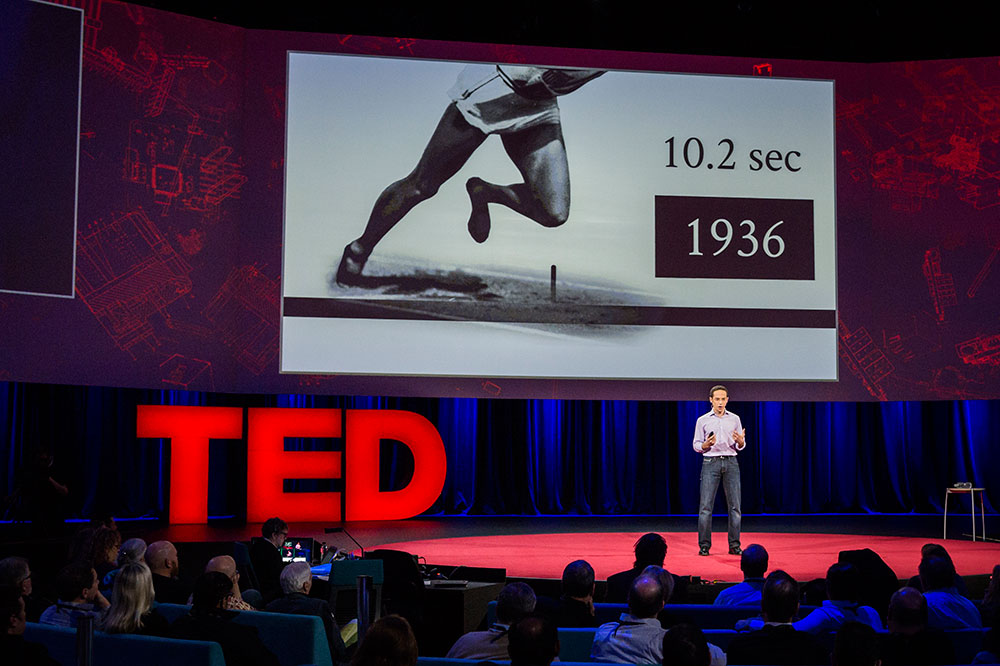
When your slides rock, your whole presentation pops to life. At TED2014, David Epstein created a clean, informative slide deck to support his talk on the changing bodies of athletes . Photo: James Duncan Davidson/TED
Aaron Weyenberg is the master of slide decks. Our UX Lead creates Keynote presentations that are both slick and charming—the kind that pull you in and keep you captivated, but in an understated way that helps you focus on what’s actually being said. He does this for his own presentations and for lots of other folks in the office. Yes, his coworkers ask him to design their slides, because he’s just that good.
We asked Aaron to bottle his Keynote mojo so that others could benefit from it. Here, 10 tips for making an effective slide deck, split into two parts: the big, overarching goals, and the little tips and tricks that make your presentation sing.

Aaron used this image of a New Zealand disaster to kick off a slide deck from TED’s tech team — all about how they prepares for worst-case scenarios. He asked for permission to use the image, and credited the photographer, Blair Harkness. View the whole slidedeck from this presentation.
The big picture…
- Think about your slides last . Building your slides should be the tail end of developing your presentation. Think about your main message, structure its supporting points, practice it and time it—and then start thinking about your slides. The presentation needs to stand on its own; the slides are just something you layer over it to enhance the listener experience. Too often, I see slide decks that feel more like presenter notes, but I think it’s far more effective when the slides are for the audience to give them a visual experience that adds to the words. .
- Create a consistent look and feel . In a good slide deck, each slide feels like part of the same story. That means using the same or related typography, colors and imagery across all your slides. Using pre-built master slides can be a good way to do that, but it can feel restrictive and lead to me-too decks. I like to create a few slides to hold sample graphic elements and type, then copy what I need from those slides as I go. .
- Think about topic transitions . It can be easy to go too far in the direction of consistency, though. You don’t want each slide to look exactly the same. I like to create one style for the slides that are the meat of what I’m saying, and then another style for the transitions between topics. For example, if my general slides have a dark background with light text, I’ll try transition slides that have a light background with dark text. That way they feel like part of the same family, but the presentation has texture—and the audience gets a visual cue that we’re moving onto a new topic. .
- With text, less is almost always more . One thing to avoid—slides with a lot of text, especially if it’s a repeat of what you’re saying out loud. It’s like if you give a paper handout in a meeting—everyone’s head goes down and they read, rather than staying heads-up and listening. If there are a lot of words on your slide, you’re asking your audience to split their attention between what they’re reading and what they’re hearing. That’s really hard for a brain to do, and it compromises the effectiveness of both your slide text and your spoken words. If you can’t avoid having text-y slides, try to progressively reveal text (like unveiling bullet points one by one) as you need it. .
- Use photos that enhance meaning . I love using simple, punchy photos in presentations, because they help what you’re saying resonate in your audience’s mind without pulling their attention from your spoken words. Look for photos that (1) speak strongly to the concept you’re talking about and (2) aren’t compositionally complex. Your photo could be a metaphor or something more literal, but it should be clear why the audience is looking at it, and why it’s paired with what you’re saying. For example, I recently used the image above—a photo of a container ship about to tip over (it eventually sank)—to lead off a co-worker’s deck about failure preparation. And below is another example of a photo I used in a deck to talk about the launch of the new TED.com . The point I was making was that a launch isn’t the end of a project—it’s the beginning of something new. We’ll learn, adapt, change and grow.
Here, a lovely image from a slidedeck Aaron created about the redesign of TED.com . View the whole deck from this presentation .
And now some tactical tips…
- Go easy on the effects and transitions . Keynote and Powerpoint come with a lot of effects and transitions. In my opinion, most of these don’t do much to enhance the audience experience. At worst, they subtly suggest that the content of your slides is so uninteresting that a page flip or droplet transition will snap the audience out of their lethargy. If you must use them, use the most subtle ones, and keep it consistent. .
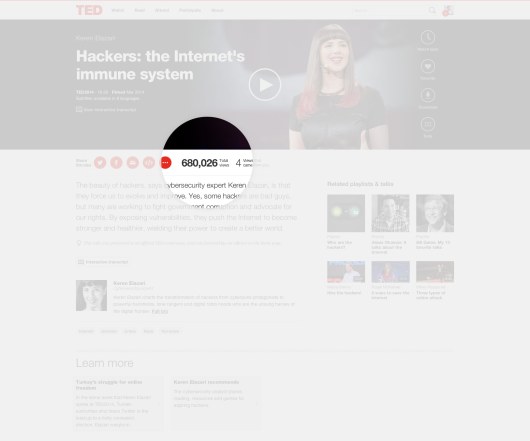
- Try panning large images . Often, I want to show screen shot of an entire web page in my presentations. There’s a great Chrome extension to capture these—but these images are oftentimes much longer than the canvas size of the presentation. Rather than scaling the image to an illegible size, or cropping it, you can pan it vertically as you talk about it. In Keynote, this is done with a Move effect, which you can apply from an object’s action panel. .
- For video, don’t use autoplay . It’s super easy to insert video in Keynote and Powerpoint—you just drag a Quicktime file onto the slide. And when you advance the deck to the slide with the video that autoplays, sometimes it can take a moment for the machine to actually start playing it. So often I’ve seen presenters click again in an attempt to start the video during this delay, causing the deck to go to the next slide. Instead, set the video to click to play. That way you have more predictable control over the video start time, and even select a poster frame to show before starting. .
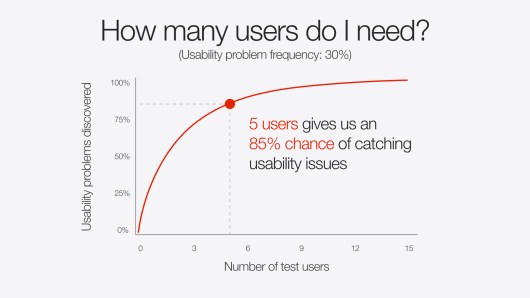
Lastly, I’d love to leave you with a couple book recommendations. The first is Resonate , by Nancy Duarte. It’s not so much about slides, but about public speaking in general – which is the foundation for any presentation, regardless of how great your slides are. In it, she breaks down the anatomy of what makes a great presentation, how to establish a central message and structure your talk, and more. (One of her case studies comes from Benjamin Zander’s charming TED Talk about classical music, a talk that captivated the audience from start to finish.) Think of this as prerequisite reading for my second recommendation, also by Duarte: Slide:ology . This is more focused on presentation visuals and slides.
Happy slide-making.
- Subscribe to TED Blog by email
Comments (57)

Home > Blog > Speaking 101 > How To Write A TED Talk Outline From Scratch
How To Write A TED Talk Outline From Scratch
Whether you’re reading this as an aspiring speaker or having just booked your first TED appearance, it’s no secret that TED Talks can be a huge boost for a professional speaker. According to past TED speakers, in fact, giving one can be game-changing in terms of both reputation and speaking fees. That said, prepping for a TED talk isn’t just gratefulness and excitement. It can also be a source of nerves, due to their unique format and the prestige of the TED Organization . Fortunately, mastering how to write a TED Talk outline doesn’t have to be painful. In this guide, we’re going to cover all the steps to knocking one out in no time.
Before we get into detail, please note that this guide focuses on the technical aspects of writing TED Talk outlines. In other words, while we at SpeakerFlow have no trouble compiling resources, none of us have given a TED Talk. In light of that, I highly recommend also reaching out to other TED or TEDx speakers in your network to learn about their experience and how they recommend preparing for a TED event. That way, when the event itself comes, you’ll be fully prepared and ready to dazzle your audience. ✨
Choose the main idea of your TED Talk.
First, before you begin writing your TED Talk outline, identify the main idea of your talk. Although you may not explicitly state it until the end, this idea will serve as the foundation for your presentation. As such, it should build off your experience as an industry expert while fitting the theme of the TED event.

One way to approach this is to review past TED Talks to see where they overlap with your primary discipline. One of the most popular, for example, is “ The Danger of a Single Story ” by Nigerian author Chimamanda Ngozi Adichie. In her talk, Adichie mentions that “Stories have been used to dispossess and to malign, but stories can also be used to empower and to humanize”. Although she is presenting this idea as it relates to books, the same argument can also be applied to political conversations, social media – any field in which exploring new ideas is key. Likewise, looking at your own field, compare how it lines up with other TED Talks. It may be the source of inspiration you’re looking for.
Alternatively, another way to approach your main idea is by asking the following questions from TED: “Is my idea new?,” “Is it interesting?” and “Is it factual and realistic?” Ideally, your main idea should check each of these boxes while also corresponding with your area of expertise. That way, you not only share a great idea. You also ensure that you have the greatest possible chance of connecting with your audience. After all, the purpose of TED Talks is sharing “ideas worth spreading” and, consequently, “chang[ing] attitudes, lives and, ultimately, the world”. Your TED Talk outline and its main idea should aim to do the same.
Choose a personal experience that relates to your idea.
Next, after choosing your main idea, ask yourself how it relates to your personal and professional life. What led you to your conclusion about your main idea? Who have you met that’s shaped this idea? How has your stance regarding your main idea changed over time? All of these questions are starting points, but the goal is to take your main idea and summarize how it relates to you, not as a speaker but as a human being.

Within the TED Talk archive, a great example of this is Monica Lewinsky’s 2015 TED Talk, “ The Price of Shame “. In this lecture, Lewinsky outlines some of the long-term negative effects of public shaming including anxiety, depression, and, in extreme cases, suicide. However, she also opens up about her own all-too-famous scandal with former U.S. President Bill Clinton in the 1990s and how the public shaming that followed made her life painful for decades after. In this way, she not only shows her audience the subject of public shaming from her point of view. She also successfully connects with them, reinforcing her primary argument that those targeted by public shaming are still human and even virtual shaming can have detrimental effects.
In your own TED Talk outline, sharing your experience will accomplish the same thing. Standing on stage, it can be tempting to assume that because you’re in the spotlight, your audience will listen. Yet, any member of your audience (and on the TED team) will tell you that simply isn’t true. As a result, keep in mind that connection comes first from emotional investment. Be yourself and be vulnerable and your main idea will immediately become more intriguing for those watching you, guaranteed.
Break your idea into manageable pieces or steps.
At this point, it’s time to break your main idea into easily digestible pieces of information. These pieces will make up the sections of your TED Talk outline, ultimately making your talk, as a whole, easier for the audience to understand and remember. It will also make it easier for you to memorize, as it’s generally recommended that you not use notecards during your presentation.
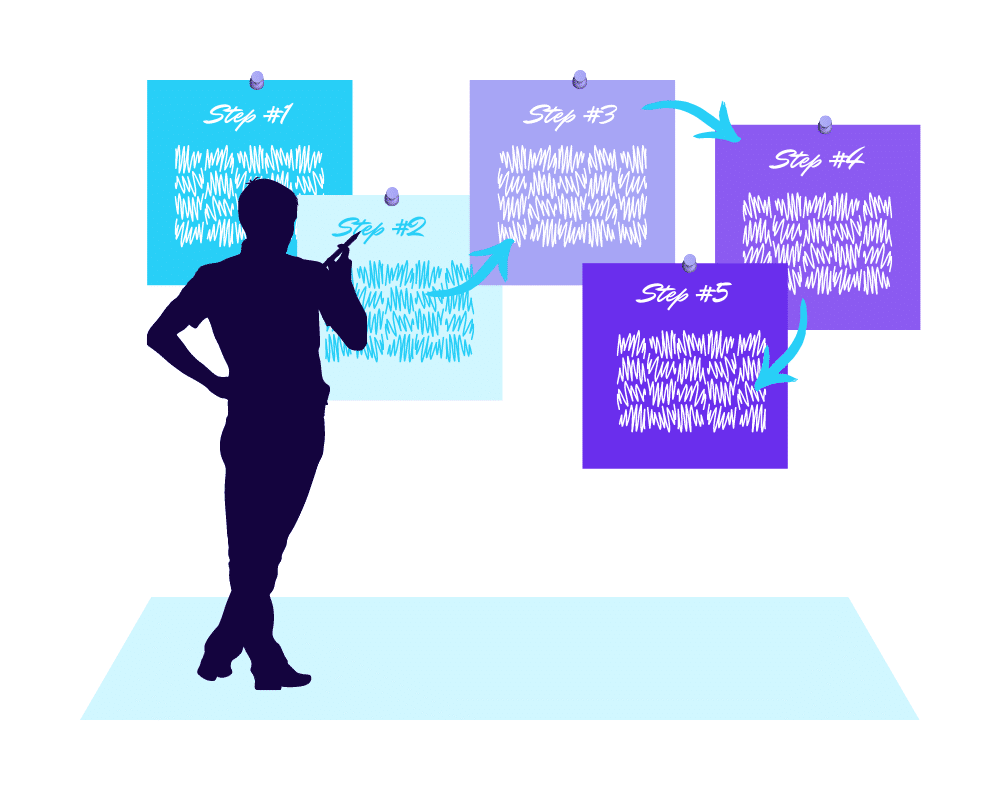
One common structure is the argumentative approach. In this case, the term “argumentative” doesn’t mean “antagonistic.” Instead, it refers to typical discussion structure, like an argument in a professional debate. In a TED Talk setting, this generally includes three sections. First, introduce your main idea and any background information. Second, present evidence for the main idea, so as to prove your point. Lastly, give your conclusion, based on the evidence provided. In essence, this takes your audience through your thought process, ideally leading them to your conclusion in the process. This structure works well if you have a controversial idea for which you know you’ll have audience pushback or doubt.
Alternatively, for easy-to-accept ideas, another common structure is the step-by-step approach. Here, the main idea and benefits of accepting it are clear. However, after your introduction, the audience is still left asking, “How can I make that happen?” In this case, your TED Talk outline would have sections devoted to each step of the process that answers this question. In this situation, your audience enters your TED Talk interested but apprehensive and leaves confident that they can accomplish the goal your main idea describes.
Again, with these or any structure, your main goals are to (a) bring your audience to your point of view and (b) give them the tools to turn your words into action after they leave the TED auditorium.
Write your outline using your experience as the intro and your steps as the body section.
By now, you have all of the necessary components of your presentation in mind. Now, it’s time to build them into a cohesive TED Talk outline. Your outline, as a whole, should begin with a strong introduction, expand into a concise but thorough explanation of your main idea, and end with a reminder of how and why acting on your main idea is necessary. Combined, this invisible structure is a proven way to attract and retain your audience’s attention, as demonstrated by many past TED speakers. Luckily, many of these speakers have also shared their insights, so you can follow their lead and give an equally stellar performance of your own. Below are a few of their most valuable tips and tricks.
Crafting the Introduction of Your TED Talk Outline
First, begin your TED Talk outline with a powerful introduction. This component of your speech is arguably the most important, as the more easily you can capture your audience’s attention initially, the more likely they are to stay engaged. It’s also important that your introduction provides a clear and easy-to-understand explanation of your main idea. Although the bulk of your explanation will take place in the next section of your TED Talk, the body, giving a simple explanation at the beginning of your Talk doesn’t just lay the groundwork for the rest of your evidence. It also demonstrates, to your audience, that your idea isn’t daunting. That way, they’re able to listen to your later call(s) to action (or your field as a whole) and think, “I guess this isn’t too complicated for me to take an interest in.”
To accomplish these goals, many speakers recommend building your introduction around the personal experience you chose back in Step #2. This allows you to relate more closely to your audience, lead up to the introduction of your main idea, and grab your audience’s attention all in one swift motion. In the event that your main idea is a heavy topic, beginning with a humorous story can also help lighten the tone of your Talk, making it easier for you to be frank with your audience without being depressing. In short, your introduction should be interesting but not overkill, honest but not harsh, and explanatory but not wordy. Remember, it’s only the prelude to the bulk of your TED Talk outline.
TED’s Introduction Tips
- Be quick and concise (i.e. don’t dance around your main idea).
- Focus on the audience, not yourself.
- Avoid stereotypical openings to presentations (dictionary definition, list of statistics, etc).
- For a well-known main idea, start by clearly stating it.
- For a lesser-known main idea or an idea in a lesser-known field, start by explaining a related topic or idea that is well-known. Then, link that back to your main idea.
- For emotional or heavy topics, start by candidly stating it. Avoid being candid to the point of being harsh, and avoid anything that suggests you’re trying to force an emotional reaction.
[hubspot type=cta portal=5815852 id=3c9311b6-9f9d-42ea-99a9-0a9323d91688]
Building the Body of Your TED Talk Outline
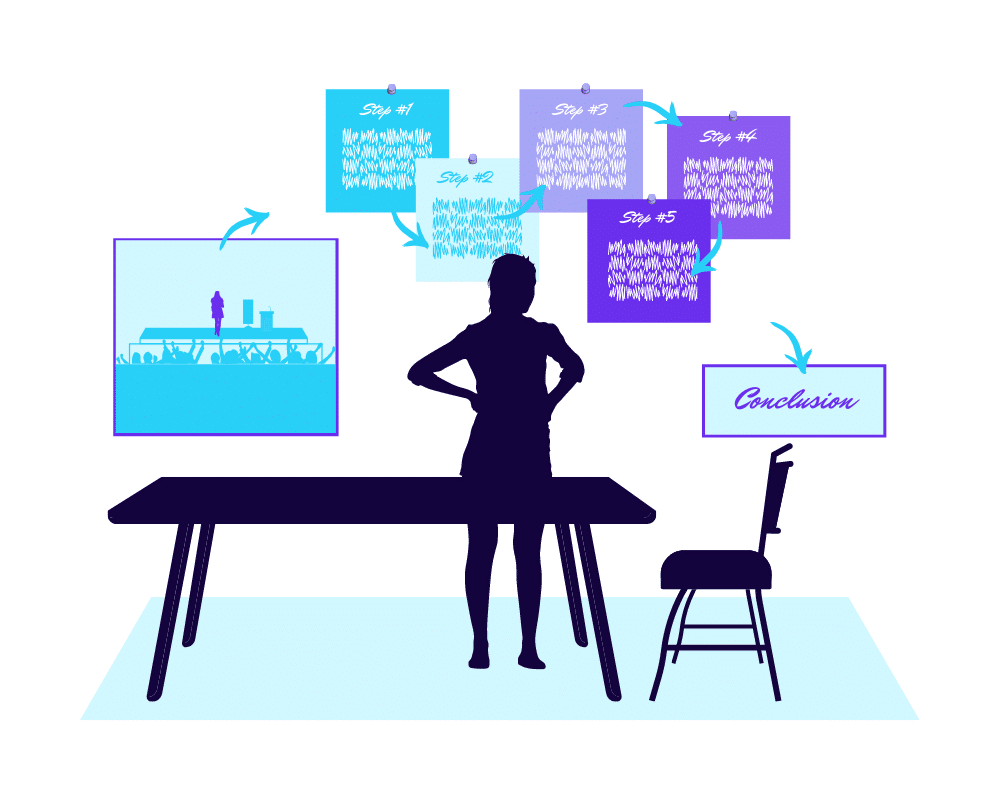
After constructing the introduction, it’s time to draft the body of your TED Talk outline. For this part of your Talk, the focus should be on retaining your audience’s attention and providing sufficient evidence to support your main idea. Here, it’s important to again provide balance, showcasing necessary information for your thesis but not so much that your audience loses interest or gets confused. In addition, the body of your outline should build upon your introduction and provide next steps for your audience to take with them, once your TED Talk is over. That way, your main idea lives beyond the room and the audience is guaranteed a more impactful presentation.
To meet these objectives, the best TED speakers use the “manageable pieces” we covered back in Step #3 to build a sort of story or handbook. For the former, each piece is a different event that leads into the conclusion, or the happy or sad ending of your story. This is especially useful if you’re focusing on an emotional topic or lacing your personal experience throughout the content of your presentation. For the later, each piece is more evidence-oriented with each piece acting as support for your main claim. Contrary to the “story” layout, this structure is used largely in science-oriented presentations, where strong empirical evidence is mandatory.
In essence, regardless of the route you choose, each “piece” is a different subsection of this section of your Talk. This allows you to build on top of each individual piece of information and, in doing so, bring your audience to understand and accept your conclusion.
TED’s Body Paragraph(s) Tips
- Build a list of the evidence you want to cite in your presentation, keeping in mind that you will need more evidence surrounding things you need to convince your audience of. Then, with the help of a friend or daily member (not a colleague), remove any evidence that isn’t absolutely essential to your argument.
- Focus on new information. If you must include basic information, for the sake of introducing more advanced information, keep it brief.
- Use empirical evidence, not anecdotal evidence.
- Keep your verbiage simple. If you must use complex terminology, leave time to briefly explain it.
- Acknowledge and politely address any contradictions to your main idea. These include, according to TED speakers, “controversies in your claims, legitimate counterarguments, reasons you might be wrong, or doubts your audience might have about your idea.”
- Use slides to help explain complex or pivotal points in your presentation. For slides with citations, be sure to keep your citation confined to a corner of the screen, so that it doesn’t detract from the primary content of the slide.
Forming the Conclusion of Your TED Talk Outline
Lastly, every good TED Talk ends with a killer conclusion. As mentioned a few times in this guide, there are two things that your conclusion should be above all else: positive and compelling. While the body paragraphs of your TED Talk outline are all about explaining your main idea, your conclusion should drive home why it’s important. It should also communicate this in a positive way. Even for tough topics and uncomfortable situations, the purpose of TED Talks is to showcase problems and propose solutions. That way, members of the audience can approach them not only with well-rounded knowledge about the issue at hand but also with an “I can handle this” attitude.
Depending on your personal style, there are many ways you can accomplish these goals and end on a high note. Some speakers opt for a joke, others an inspirational quote, and still others a straightforward reminder of why the audience should care. Keeping those options in mind, below are the most commonly-cited conclusion tips from past TED speakers.
TED’s Conclusion Tips
- End on a high note. Your audience should, ideally, leave with a sense of positivity towards you and your main idea.
- End, if appropriate, with a call to action and a reminder of why your main idea is worth implementing in their lives.
- Avoid ending with transactional language or anything sales-related (book cover, company logo, etc.). The goal of the talk is to share ideas, not promote a specific individual, business, product, or service.
Support your TED Talk outline with visual aids.
The next step in preparing for your TED Talk is adding visual aids. For many presentations, visual aids are immensely helpful both for the audience and the presenter. If you’re explaining a complex process, for example, a visual diagram can make it easier to understand. Likewise, if you’re describing a story, including images of the people involved can help your audience better follow along. In short, while you shouldn’t rely on visual aids to communicate your message on their own, they should act as supporting characters in your presentation.

One example of this is the 2012 TED Talk, “ Strange Answers To The Psychopath Test ” from British writer and documentarian Jon Ronson. In this Talk, Ronson tells the story of his experience with a criminal who faked psychopathy in order to avoid prison time. Although it’s not a complicated story, Ronson’s slides provide a visual for the audience to follow as he explains his conversations with Tony, the aforementioned criminal. First and foremost, this makes it effortless to follow along with his story, despite any tangents or jokes that may otherwise distract from the “plot”. Secondarily, each slide also allows Ronson to add an extra “punch” to the comedic twists of his story. This makes his TED Talk, as a whole, not only engaging but also memorable, as the audience leaves with both visual and audible memories of the experience.
To sum things up, although visual aids aren’t always necessary, they can provide support for your main idea and make it more notable for the members of your audience. Keep this in mind, as your write your TED Talk outline. Then, consider simple explanatory slides where your outline could use some reinforcement.
Practice reading your TED Talk outline aloud (to be sure it’s not too long).
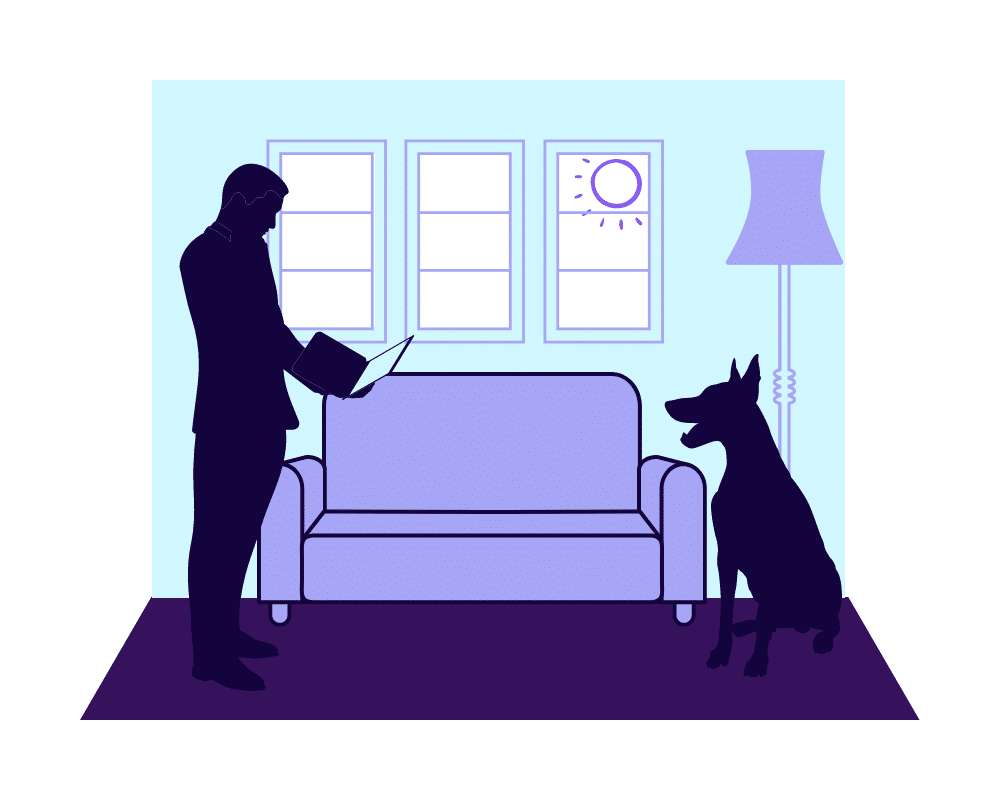
Next, after your outline and visual aids are prepared, it’s time to practice. It goes without saying that more practice only leads to a better presentation in the end. However, in the case of a TED Talk, practice is equally important when it comes to staying beneath the 18-minute time limit. According to the TED Organization, this limit is non-negotiable, regardless of the speaker or the complexity of their chosen topic. This is for two reasons, the first of which is the audience’s attention span. As TED puts it , “We’ve found that a carefully prepared presentation of this length can have an astonishing impact.” In other words, 18 minutes allows the speaker enough time to share their idea without risking the attention of the crowd. The second reason is simply to create a level playing field. That way, no speaker is given preference based on their idea or their reputation.
That said, depending on the setting, the length of a TED-affiliated presentation can range from fewer than six minutes to the maximum 18-minute limit. Part of this depends on the platform in which your Talk takes place. If you’re speaking at a TEDx event , it may be shorter. If you’re speaking at the annual, five-day TED Conference , it may be longe. For virtual speakers, it may even be extended to allow for additional audience engagement, such as a post-talk Q&A session.
Essentially, the length of your TED Talk and, by extension, your TED Talk outline, is contingent on the setting, size, and budget of the event hosting you although it should be around 18 minutes. To be sure you’re under the limit, verify your limit with the event organizer. Then, practice performing your outline, cutting it down as needed to meet that limit.
Practice and refine your outline until you’re 100% confident in it.
Finally, once you have your outline prepared to meet the time limit, there’s only one thing left to do: practice. As any professional speaker will tell you, nothing bad comes of over-preparing for an event. Likewise, when preparing for a TED Talk, the most beneficial thing you can do is rehearse as much as possible.
In fact, the following excerpt sums up the recommendations of TED event organizers and TED speakers better than I could:
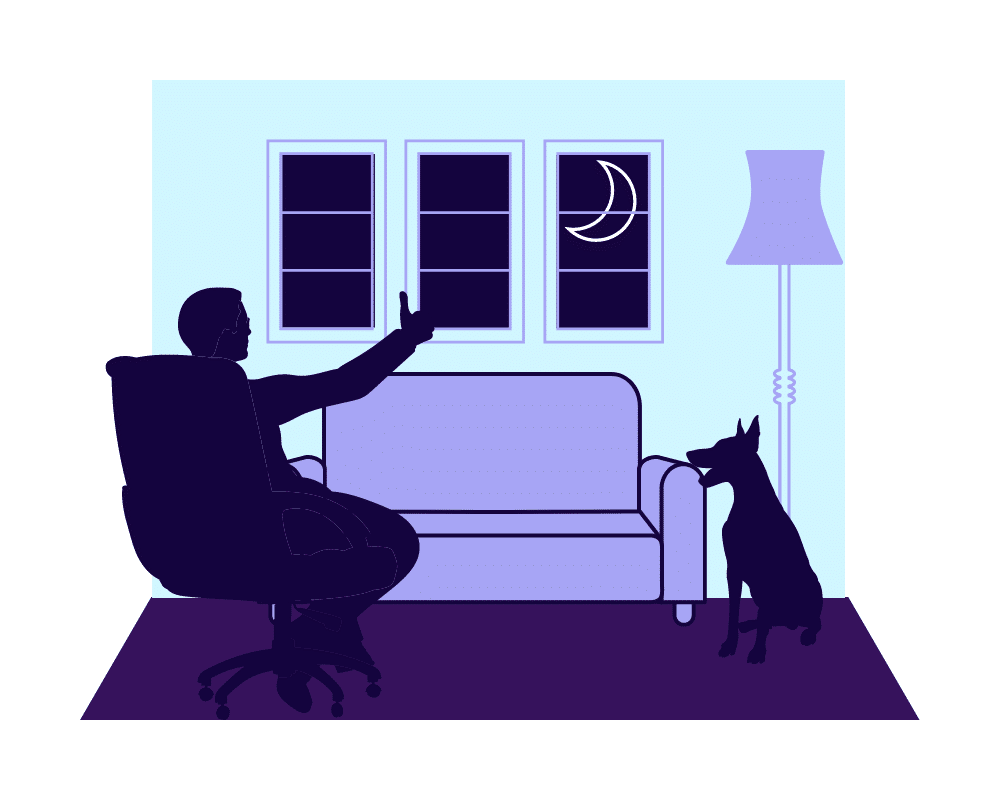
“We can’t stress this enough. Rehearse until you’re completely comfortable in front of other people: different groups of people, people you love, people you fear, small groups, large groups, peers, people who aren’t experts in your field. Listen to the criticisms and rehearse, rehearse, rehearse. If someone says you sound ‘over-rehearsed,’ this actually means you sound stilted and unnatural. Keep rehearsing, and focus on talking like you’re speaking to just one person in a spontaneous one-way conversation.”
To summarize, if you want to write a solid TED Talk outline, the greatest thing you can do, besides preparing your main idea and personal experience, is practice as much as you can. That way, whether you’re nervous on stage or just nervous about the TED stage in particular, you’ll be able to confidently deliver your Talk and meet the TED goal of “chang[ing] attitudes, lives and, ultimately, the world” head-on.
For more detailed information about the TED Organization and its events, check out our previous blog, “ What Is A TED Talk? The Fundamentals of TED Explained “. Additionally, for TED Talk outline tips and tricks straight from the TED team, see their TEDx Speaker Guide or their Illustrated Guide for TEDx Speakers . 👍
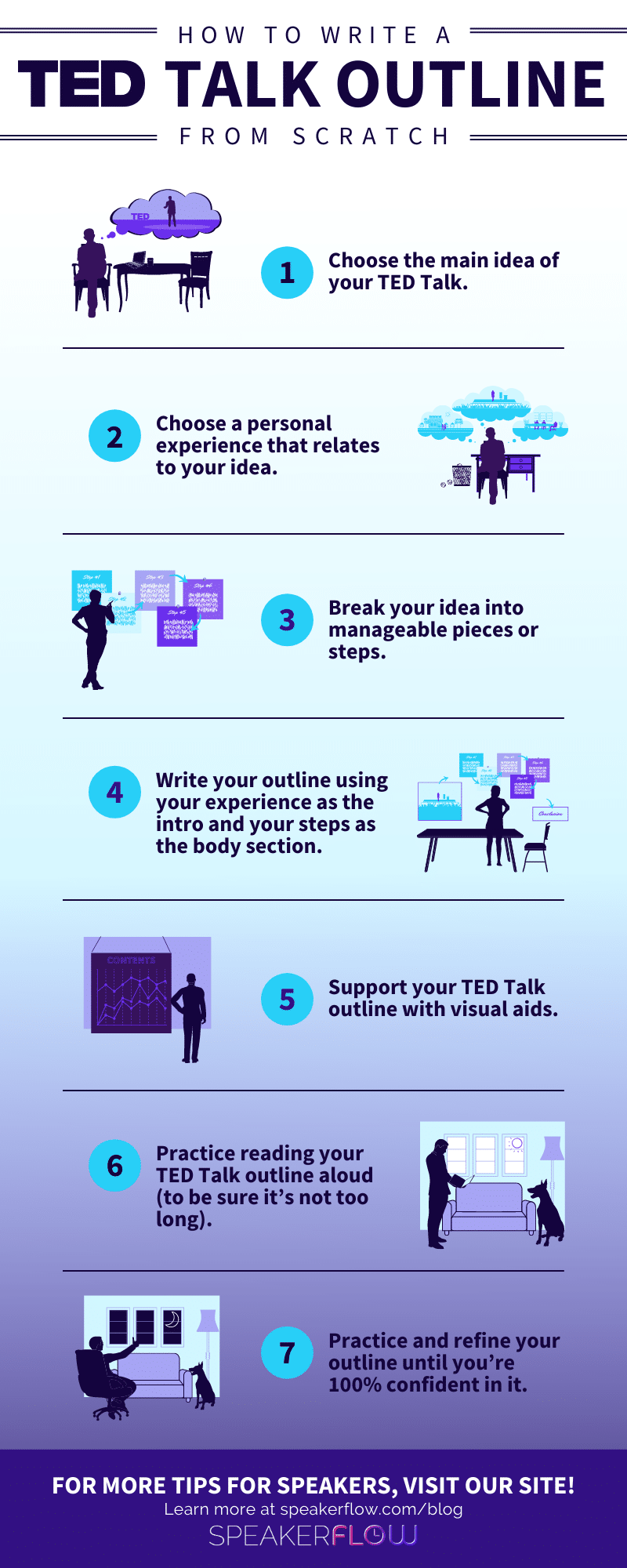
Subscribe To Our Blog
Get updates every time we release a new blog. Plus, join thousands of other speakers, coaches, and consultants learning to use systems to take control of their business.
Other Articles You Might Like

The SpeakerFlow State Of The Industry 2023 Report

Beyond Box-Checking: Why Speaker Diversity Matters

How To Speak Publicly With Confidence
Sitemap | Privacy Policy | Website Terms of Service | Terms of Use | SF University Terms of Service | SpeakerFlow CRM Terms of Service
Made With ❤️ By SpeakerFlow
Improve Your Systems in 10 Minutes or Less
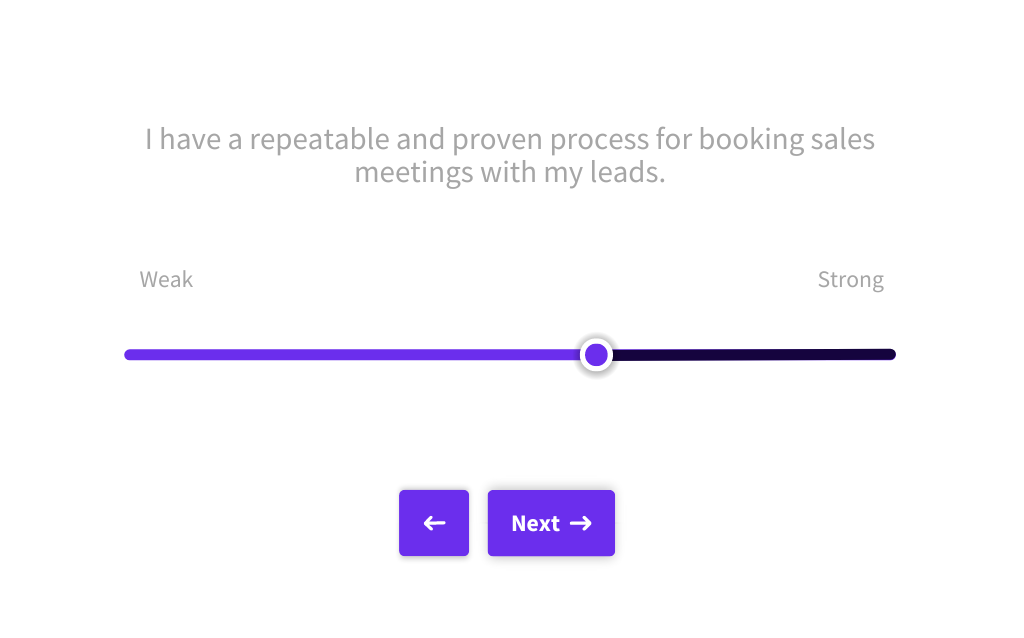
Running your business doesn’t have to be a grind. Take our free Systems Check Up to identify the systems you need to stay out of the weeds once and for all.

TED is supported by ads and partners 00:00
The secret structure of great talks
- storytelling
- communication
- public speaking

COMMENTS
The secret structure of great talks. From the "I have a dream" speech to Steve Jobs' iPhone launch, many great talks have a common structure that helps their message resonate with listeners. In this talk, presentation expert Nancy Duarte shares practical lessons on how to make a powerful call-to-action. 18:00.
There's no single formula for a great talk, but there is a secret ingredient that all the best ones have in common. TED Curator Chris Anderson shares this se...
And don't expect to find the best organization for your talk the first time you try, because that almost never happens! Step 6. Talk your way to a rough draft of your script. This is where your "speaking plan" becomes a "speech.". Take your outline or list of ordered elements and talk about each item in turn.
Building block #3: Balanced statements. "Ask not what your country can do for you — ask what you can do for your country.". It's a line from president John F Kennedy's inspiring 1961 inaugural address, and one that's stood the test of time.
It can help you peel back technicality in a warm way. . Surprise your audience. "Give the counterintuitive conclusion," says Martin. "People turn off when they think they're hearing something too familiar. Jolt them awake.". . Be the (vulnerable) hero. "People don't want to hear about the perfect person," says Martin.
Though these steps are in no way comprehensive, they contain some guiding principles that have been known to work. Step 1: Get familiar with the form ». Step 2: Develop an idea ». Step 3: Make an outline and script ». Step 4: Create slides ». Step 5: Rehearse ». Step 6: Give your talk ». Step 7: Savor the glory ».
In this Talk, Julian Treasure, an expert on sounds, demonstrates how you can achieve powerful speaking by using vocal exercises and tips. Nancy Duarte The secret structure of a great talk Why you should watch it. What do Martin Luther King's "I have a dream" speech and Steve Jobs' iPhone launch keynote have in common? According to this ...
The author of Slide:ology and Resonate, Duarte has just released a new book through the Harvard Business Review: The HBR Guide to Persuasive Presentations. The TED Blog talked with Duarte in her California office about what makes a killer presentation, as well as about how giving her own TED Talk shaped her thoughts on presenting.
Here, he shares 6 specific tips for creating the most effective slides. ( Note: All of the examples below were taken from the actual slides of TED speakers.) 1. Do keep your slides simple and succinct. "The most common mistake I see is slides that are overcrowded. People tend to want to spell everything out and cover too much information ...
At TED, when we're helping speakers prepare their talks, we ask them to identify the "gift" they're giving the audience. In my opinion, this is what every communicator should be asking themselves before any kind of communication — whether it's a keynote or a TED Talk or something smaller like a pitch to your boss or a statement at a ...
Craft your message around that topic, and keep it clear and concise. The next step, after choosing a topic for your TED talk, is crafting a clear and concise message around it. At most, TED talks run 20 minutes total, some as short as 10 minutes. There are two reasons for this design, the first of which is for the audience.
Learn how to prepare a TED Talk speech in this week's episode of MasterTalk. Follow me on Instagram: @masteryourtalk1. Every second in your 18-minute present...
16:51. Jul 2017. How a handful of tech companies control billions of minds every day. Tristan Harris. There's no single formula for a great talk, but there is a secret ingredient that all the best ones have in common. TED curator Chris Anderson shares this secret -- along with four ways to make it work for you.
Most go wrong in the first few seconds. In this amusing and often anarchic speech, top speechwriter Simon Lancaster sets out three ways that you can start your speech so it wins your audience over from the get-go. It's jam-packed with useful jokes, stories and questions that you can adapt and use in your own talks to become instantly more ...
This will ensure that you know the speech and that you're well aware of where you might need to slow down or speed up. 10. Have two natural ending points. I gave a TED-style talk in India with a head cold. I knew I'd possibly lose track of timing. Give your talk two natural ending points.
2. Focus On A Central Thought. Another important way to practice giving a TED talk is to zoom out the words you're memorizing and focus on a central thought. It's not a sequence of words that allows you to memorize something, but rather the flow of thoughts that make things click.
Hold up your index finger a few inches in front of your mouth. As you exhale steadily, make a "Wooooooo" noise (think: little kid pretending to be a ghost) for 5 to 10 seconds. Do this 5 to 10 times. (Watch her demonstrate it here .) "This … essentially relaxes the vocal folds," says Gartner-Schmidt. "It establishes breath and air ...
The more hand gestures, the more successful the Talk. There was a direct correlation between the number of views on a TED Talk and the number of hand gestures. The bottom TED Talks had an average of 124,000 views and used an average of 272 hand gestures during the 18 minute Talk. The top TED Talks had an average of 7,360,000 views and used an ...
This talk was given at a local TEDx event, produced independently of the TED Conferences.In a hilarious talk capping off a day of new ideas at TEDxNewYork, p...
9. Don't lecture the whole time. Keep in mind that people don't have long attention spans. If you need to explore a topic deeply, use humor, an engaging video or other media to present various aspects of the topic. You can also break up a long talk by posing questions to the audience, suggests Hedges. 10.
Here's the original image. Here's the process for masking it. (1) Set the image transparency to something less than 100. (2) Duplicate that image so there is one directly over the top of the other. (3) Set the dup'd image transparency back to 100. and (4) Follow the technique here to mask the dup'd image.
First, introduce your main idea and any background information. Second, present evidence for the main idea, so as to prove your point. Lastly, give your conclusion, based on the evidence provided. In essence, this takes your audience through your thought process, ideally leading them to your conclusion in the process.
Visit http://TED.com to get our entire library of TED Talks, transcripts, translations, personalized talk recommendations and more.Stress. It makes your hear...
Join host and journalist Elise Hu for thought-provoking ideas on every subject imaginable — from Artificial Intelligence to Zoology, and everything in between — given by the world's leading thinkers and creators. With TED Talks Daily, find some space in your day to change your perspectives, ignite your curiosity, and learn something new ...
From the "I have a dream" speech to Steve Jobs' iPhone launch, many great talks have a common structure that helps their message resonate with listeners. In this talk, presentation expert Nancy Duarte shares practical lessons on how to make a powerful call-to-action.
15) Tell a Personal Story. You can start your talk with a personal story. Some of the most powerful words to capture the complete attention of the audience and make a personal connection are, "Once upon a time…". From infancy and early childhood, people love stories of any kind.